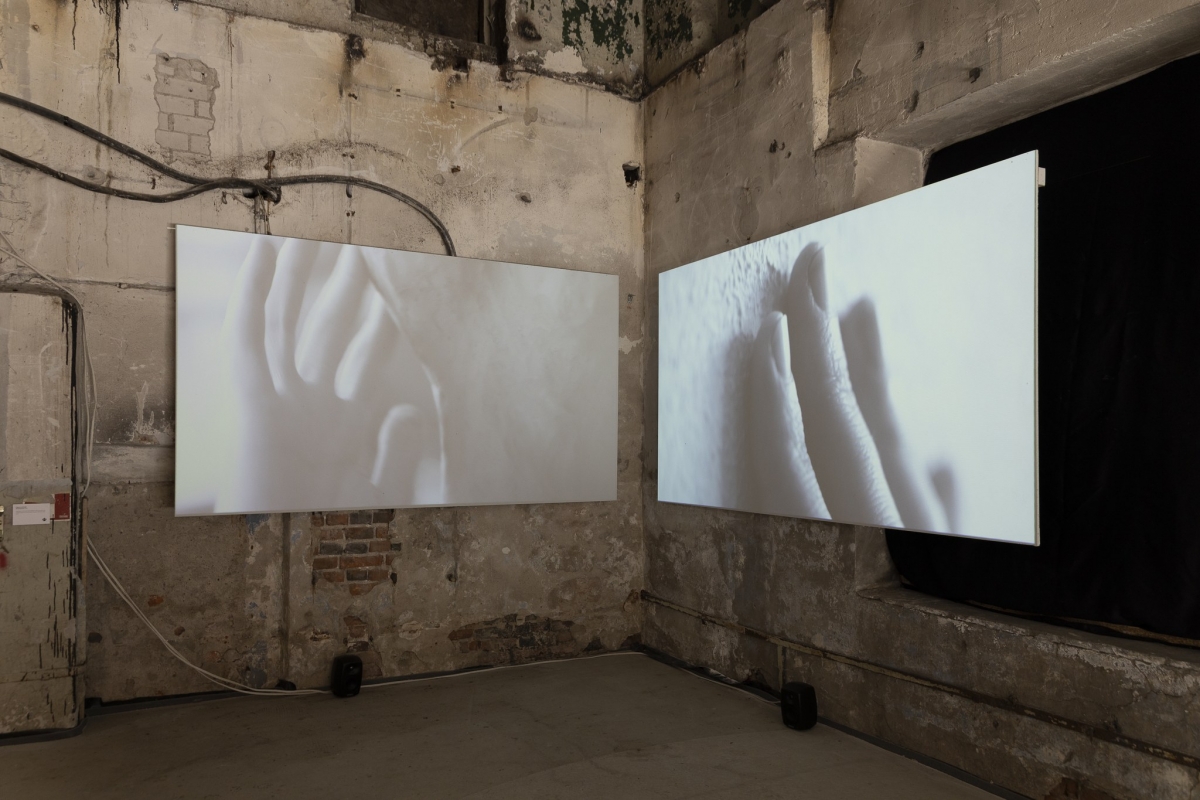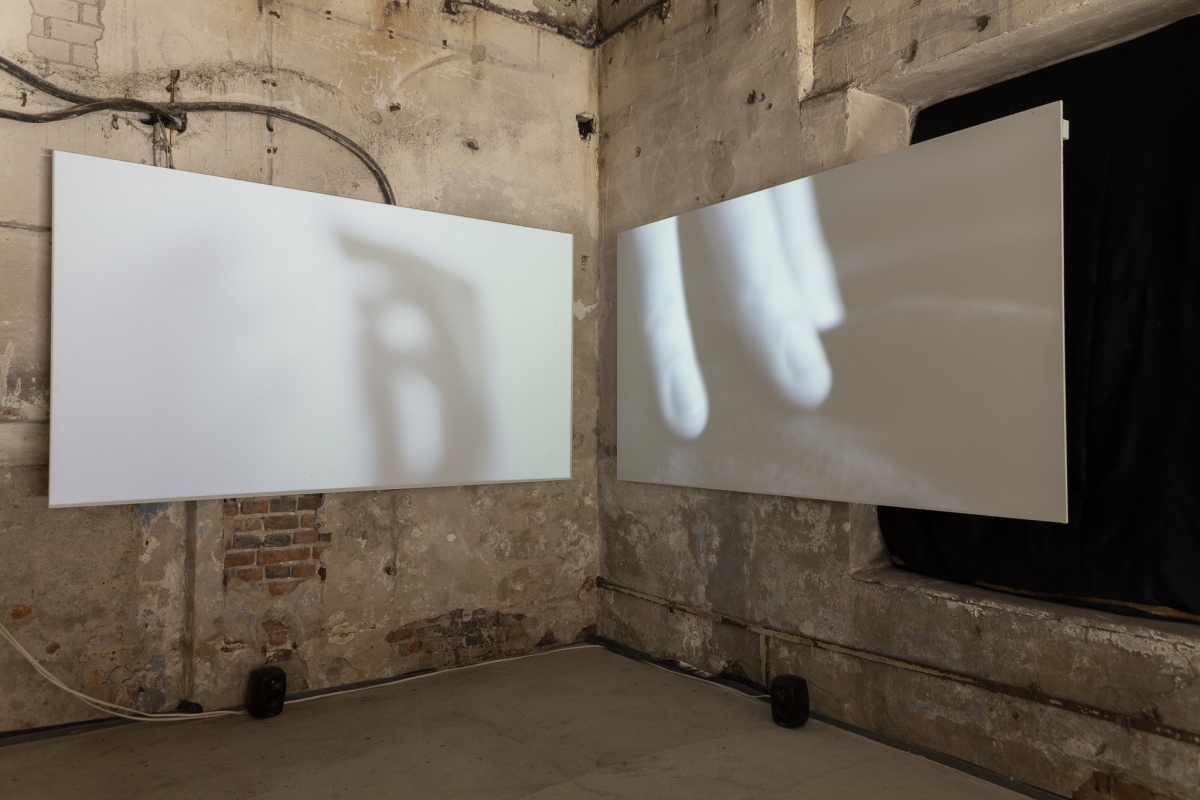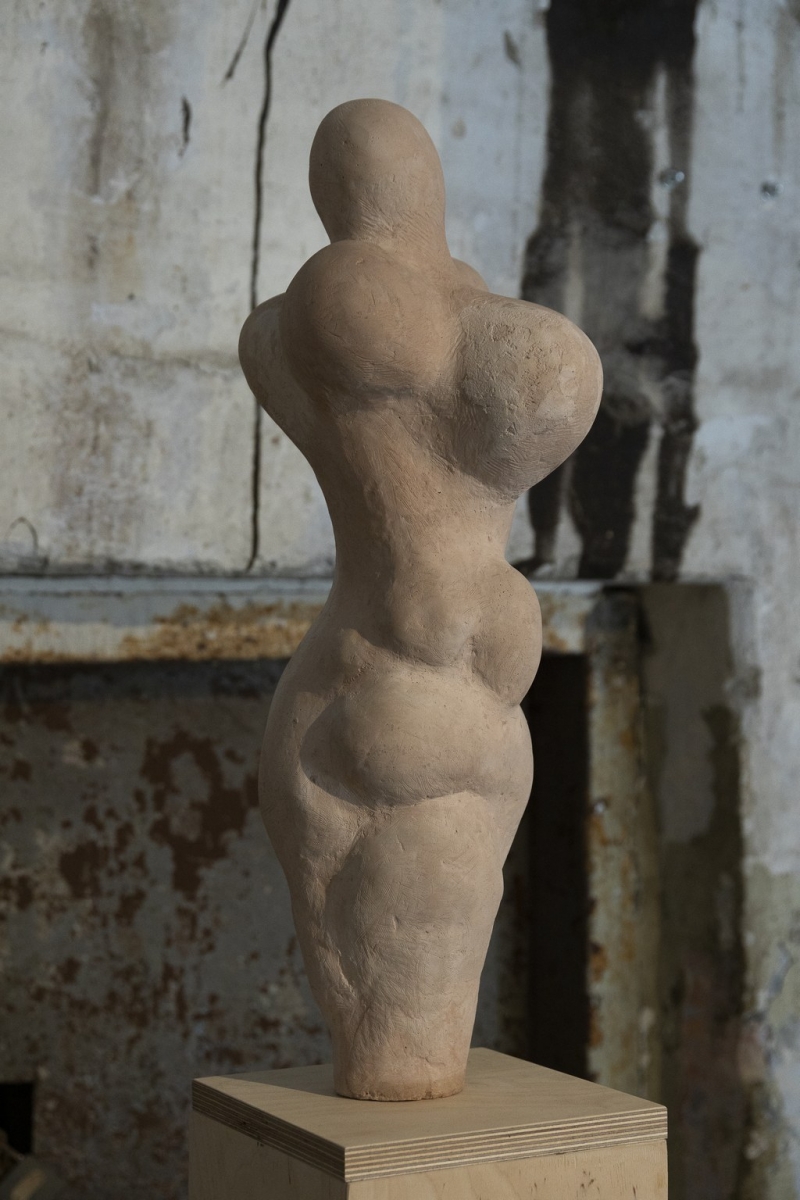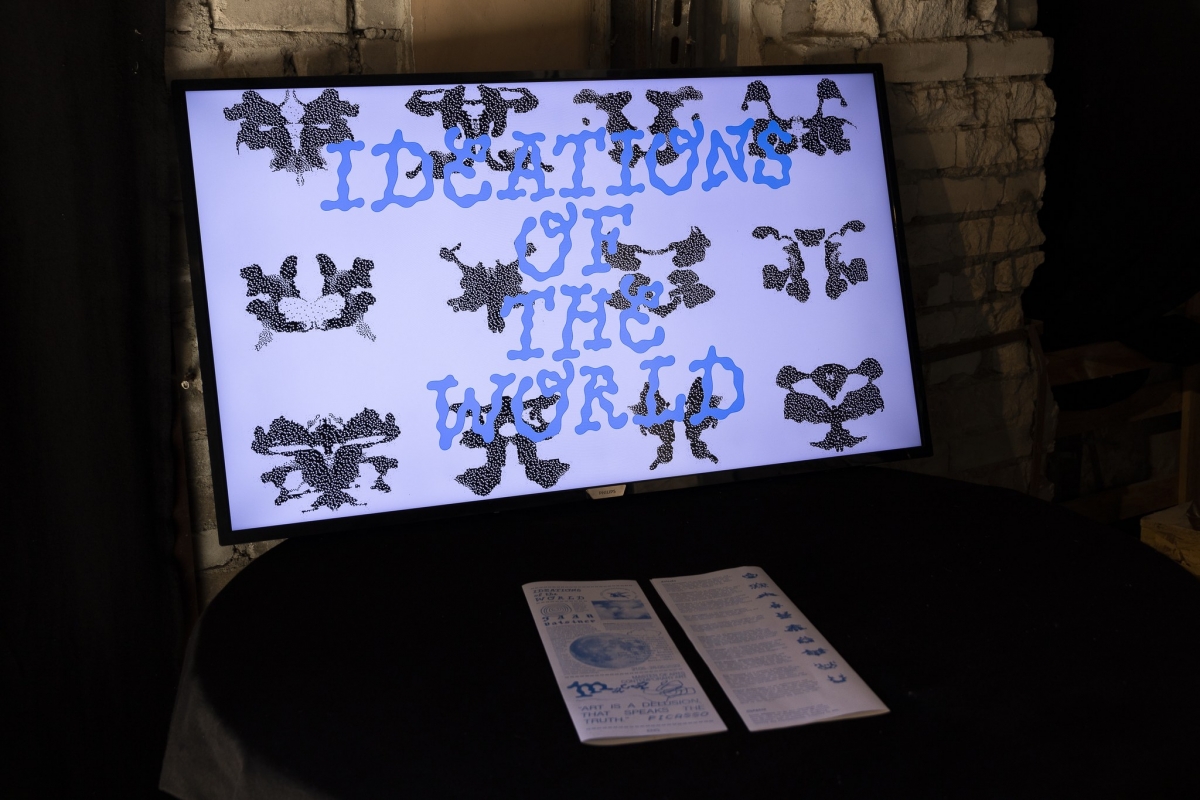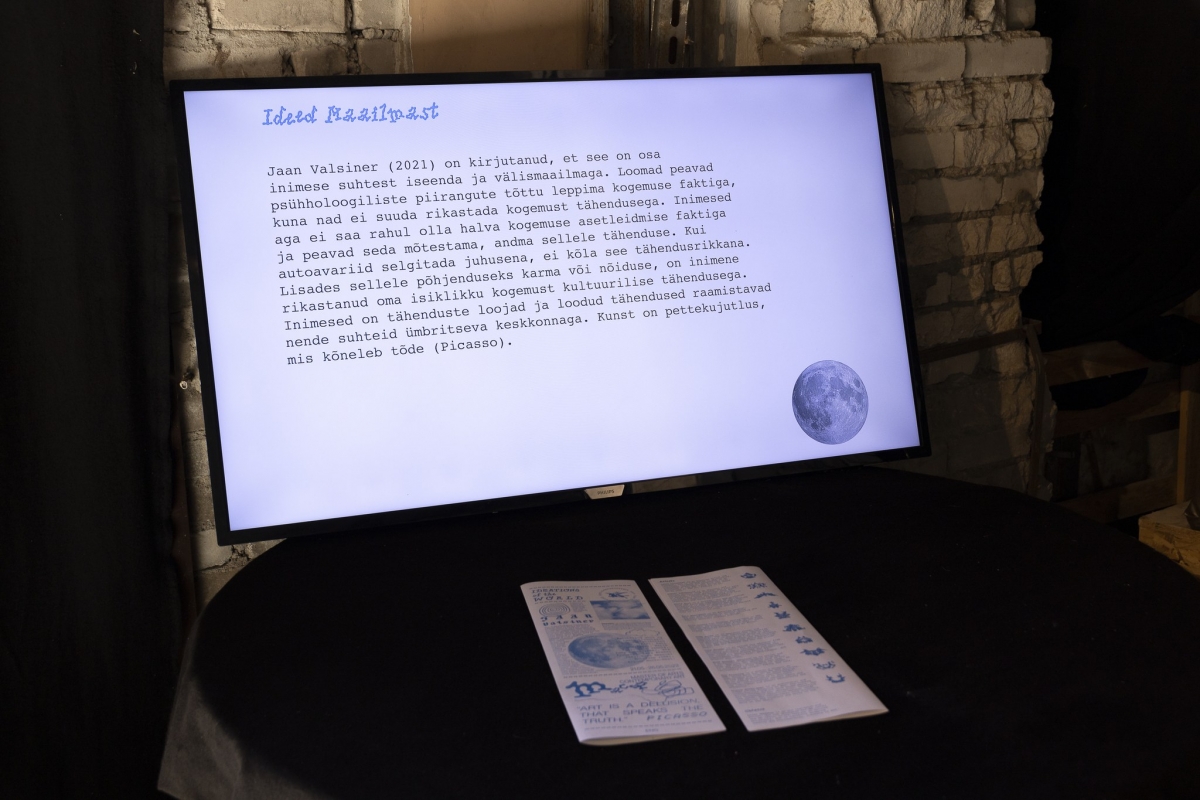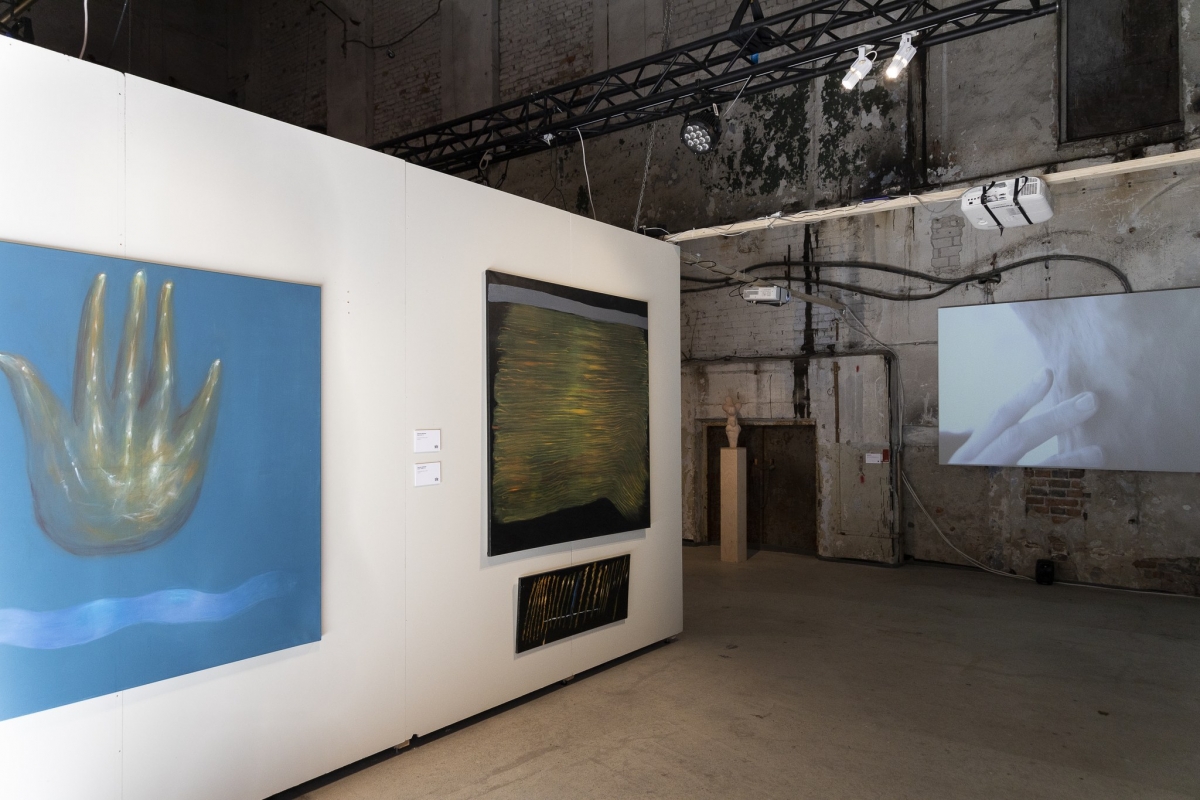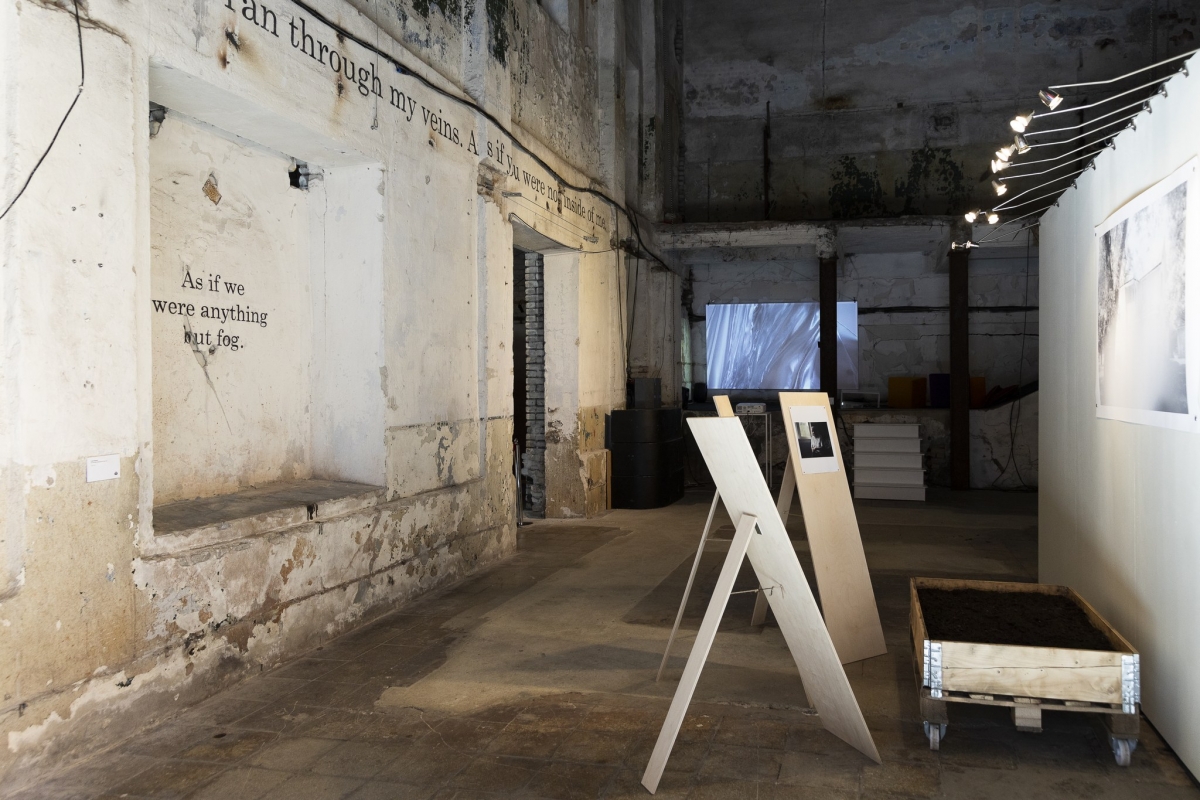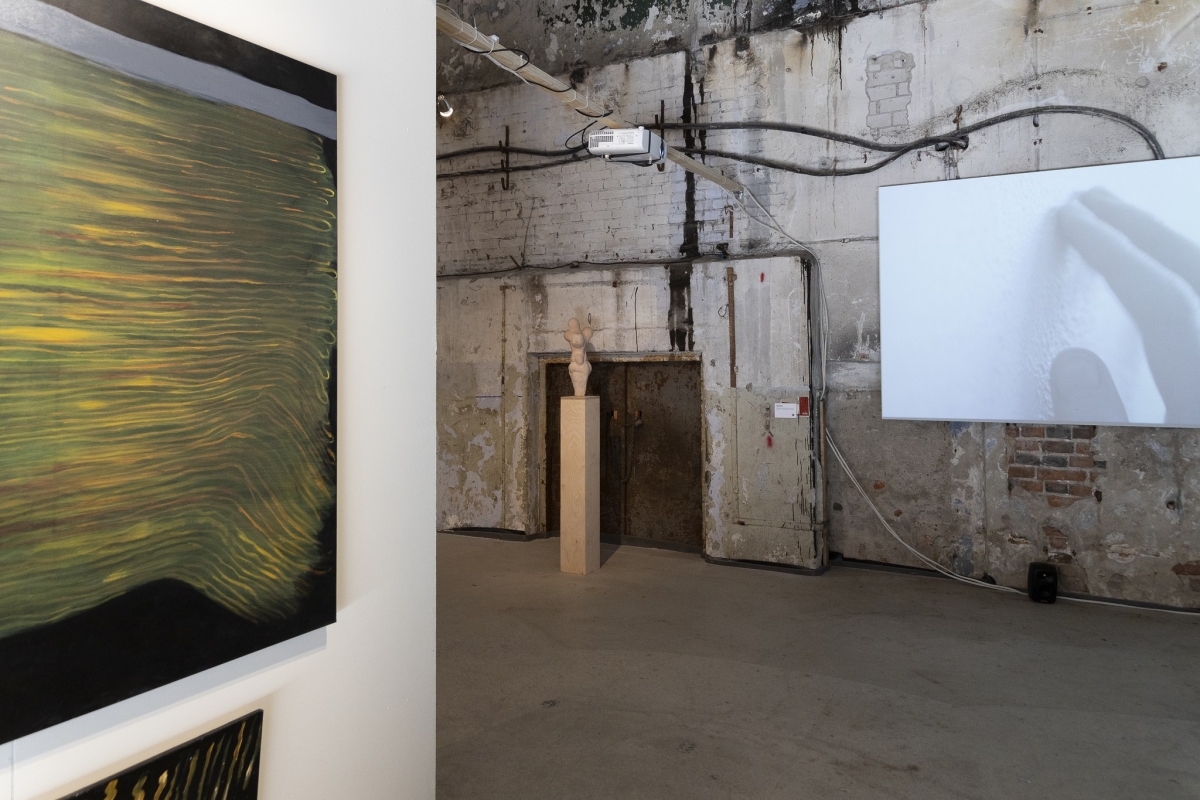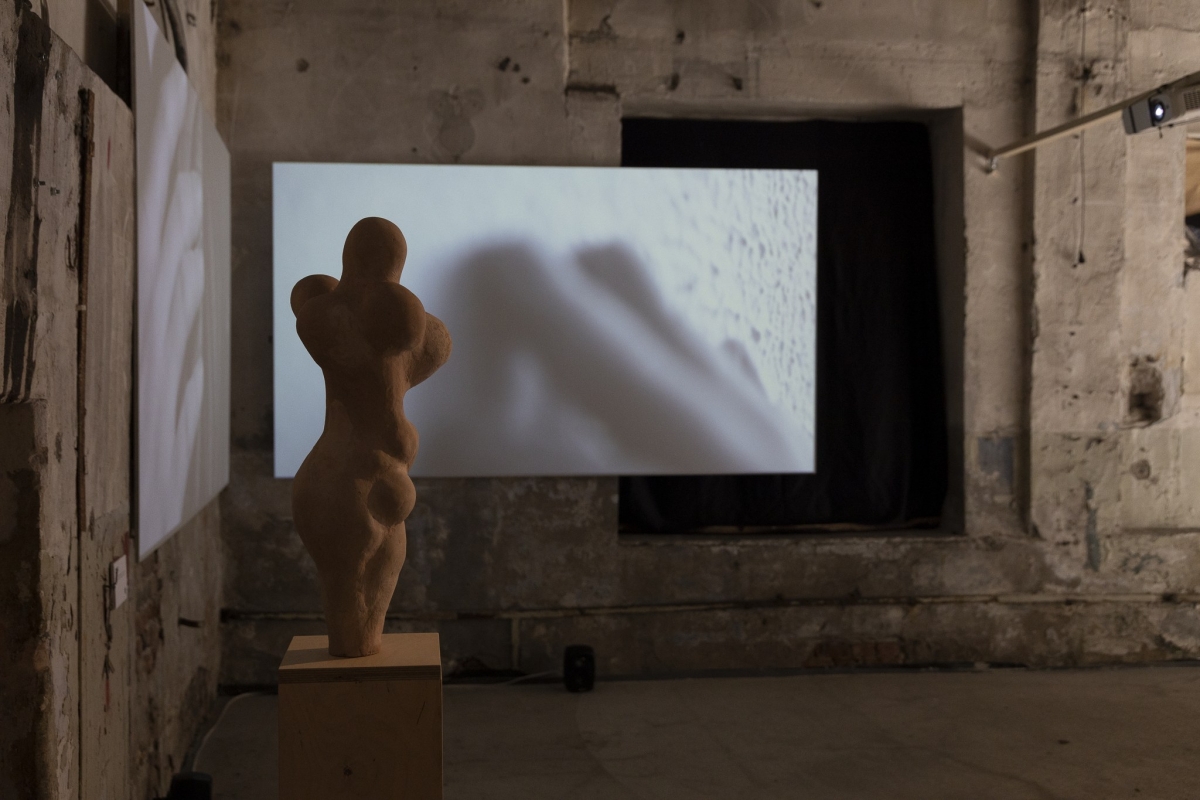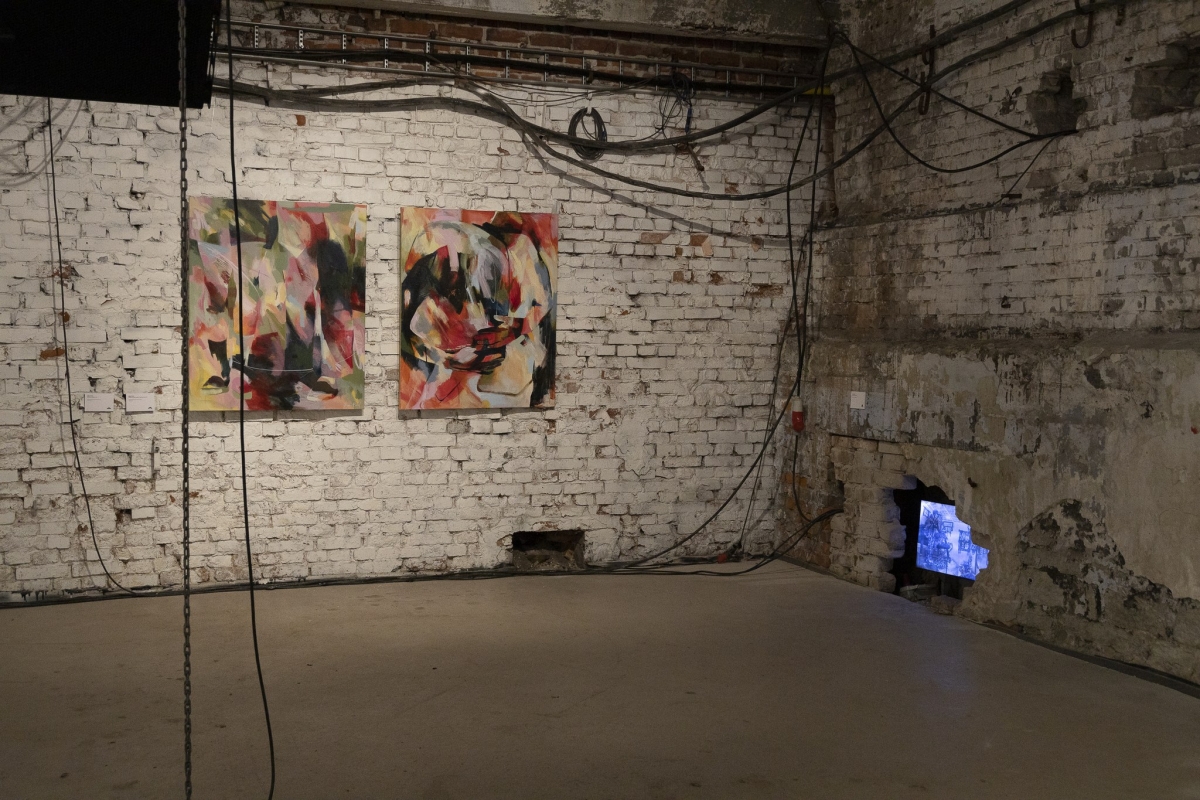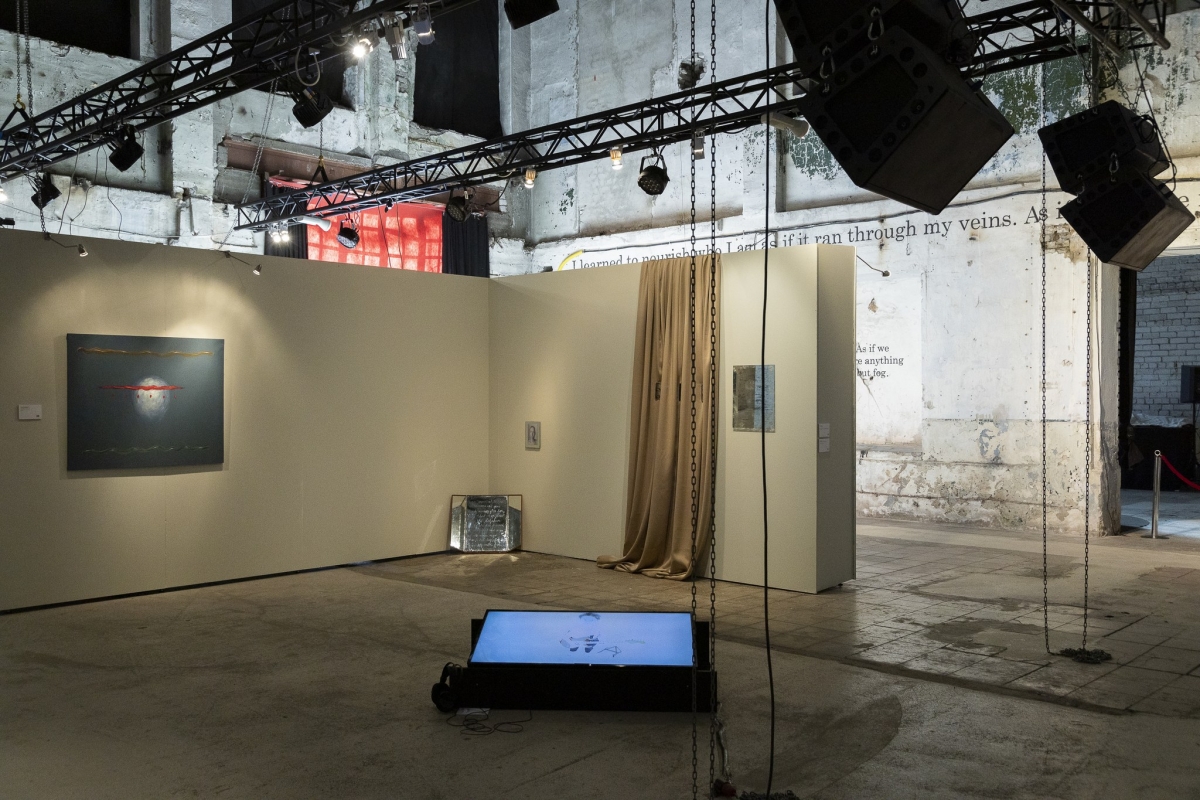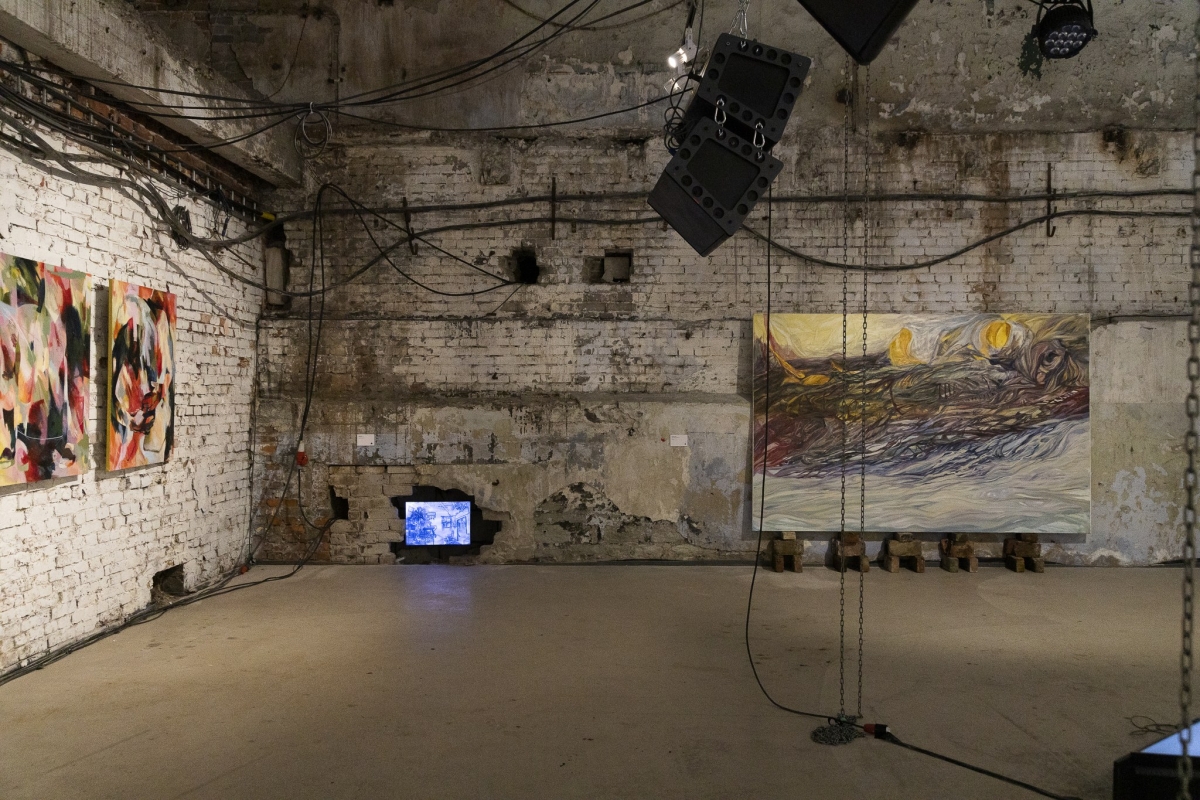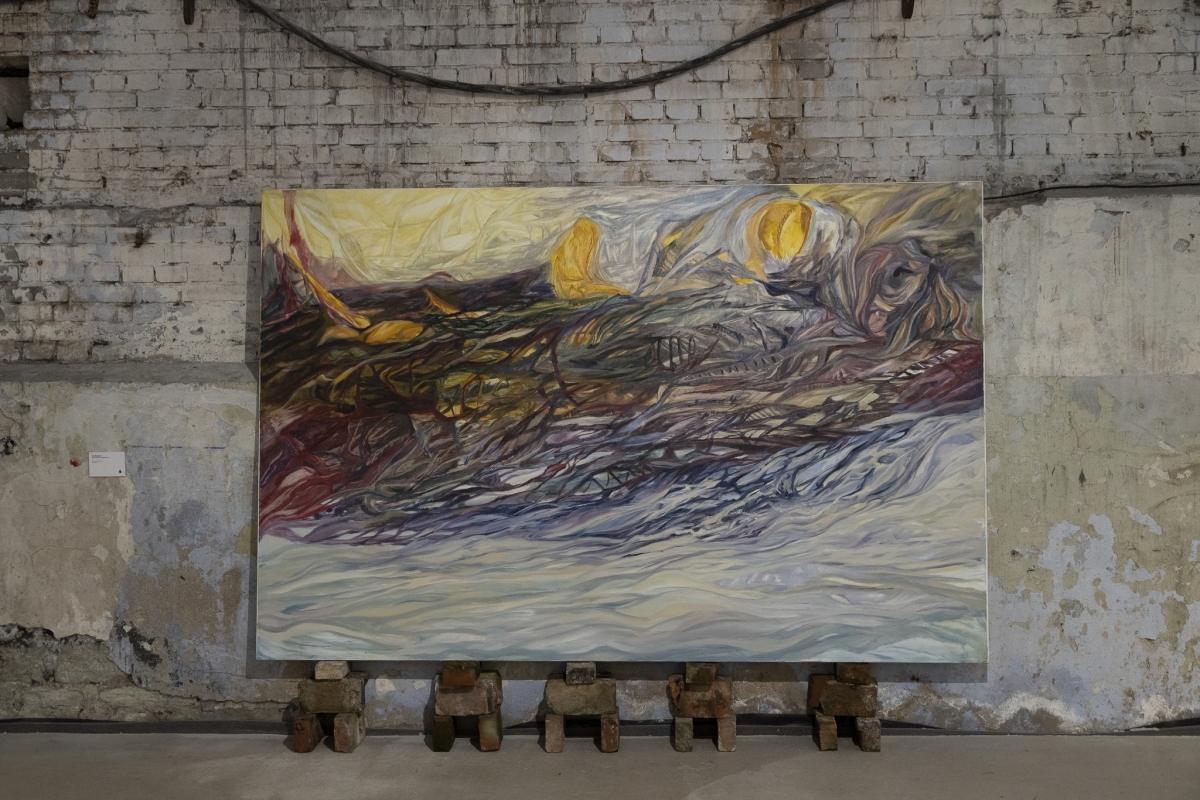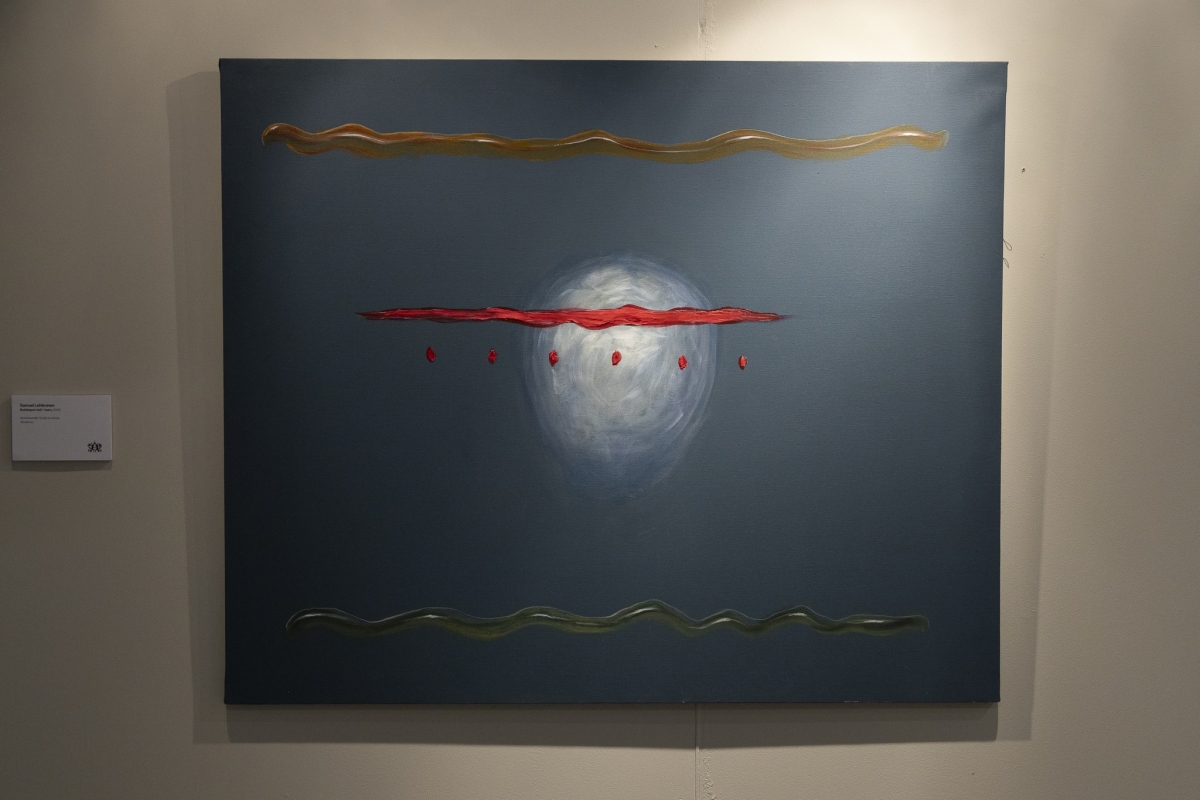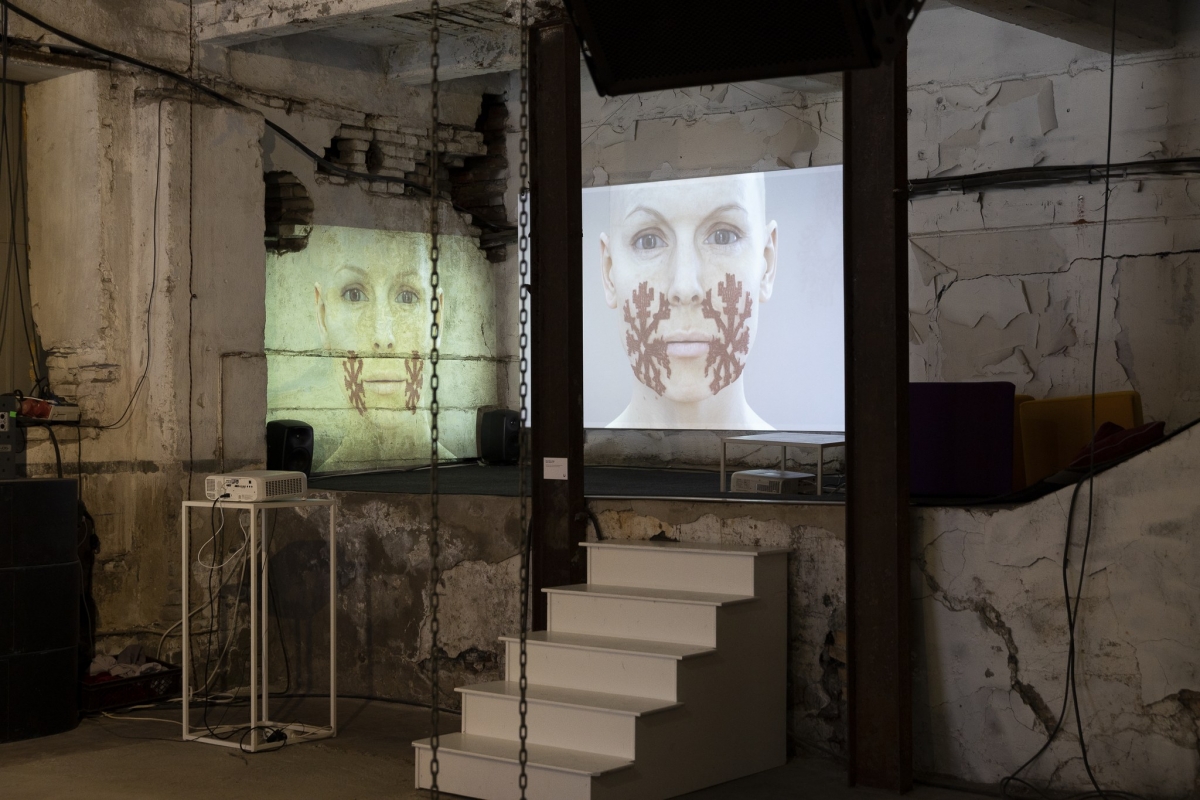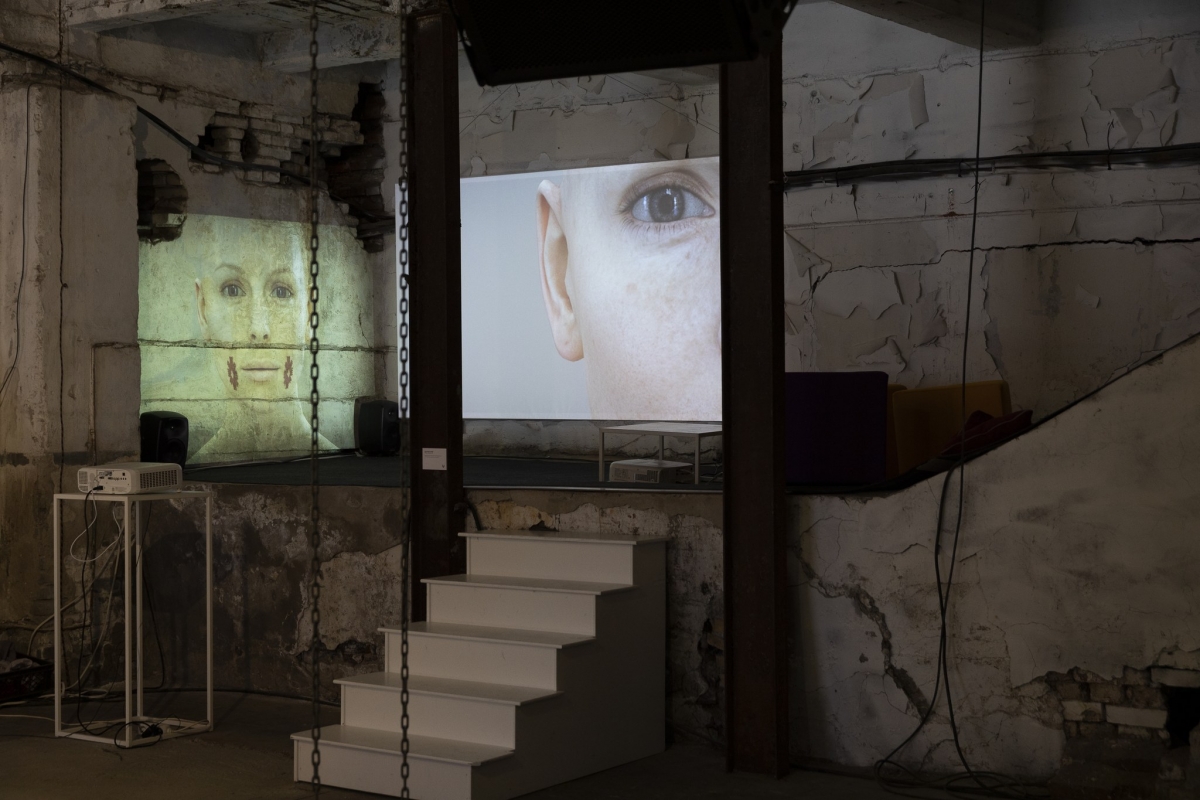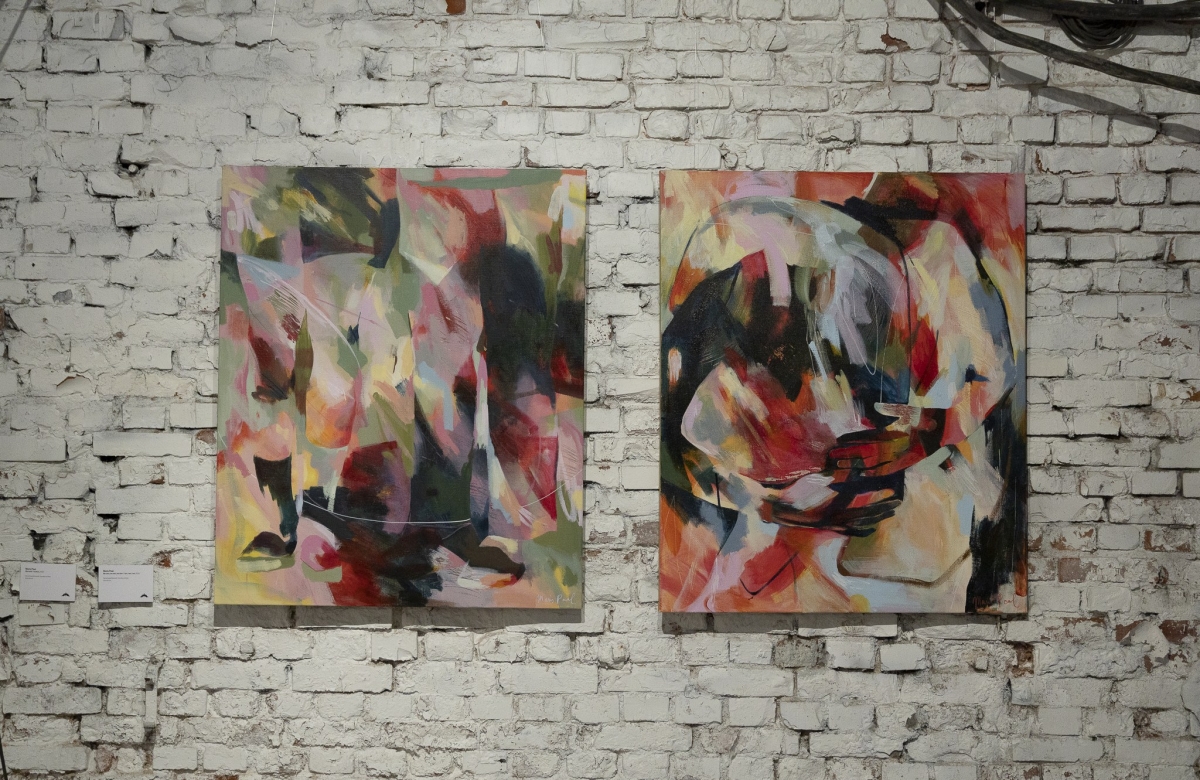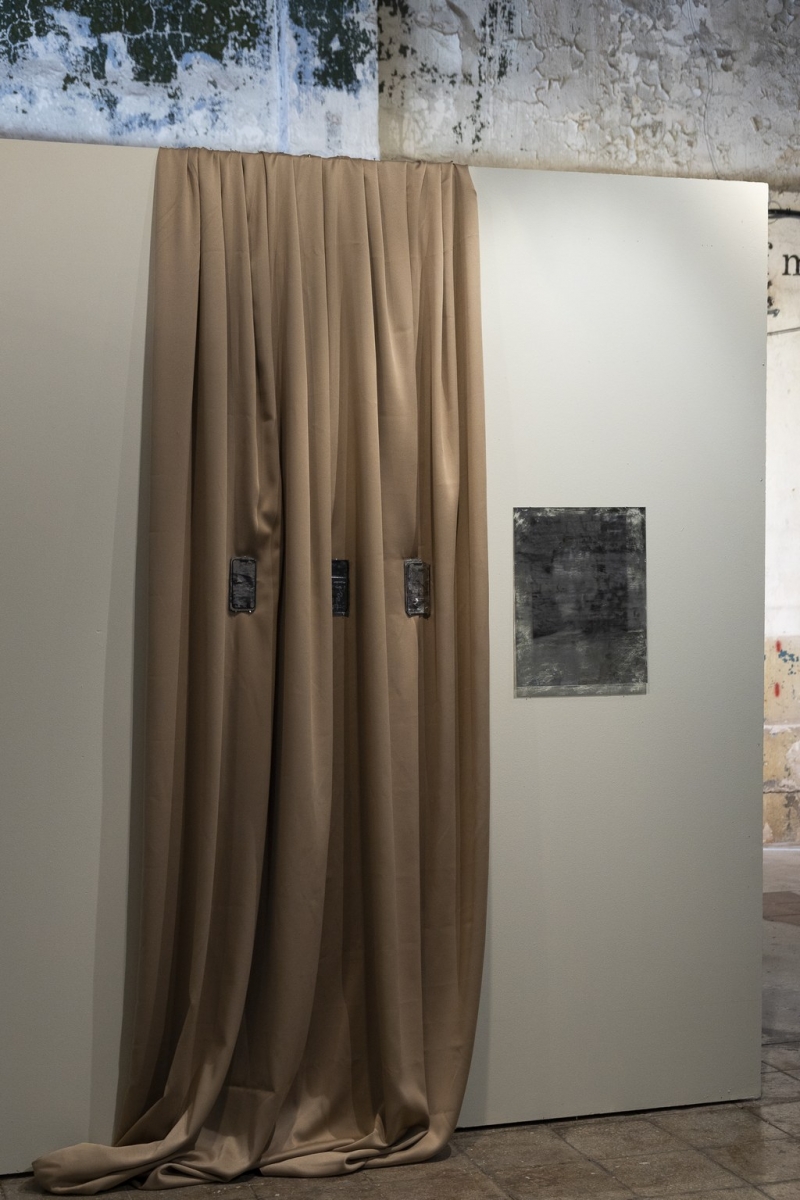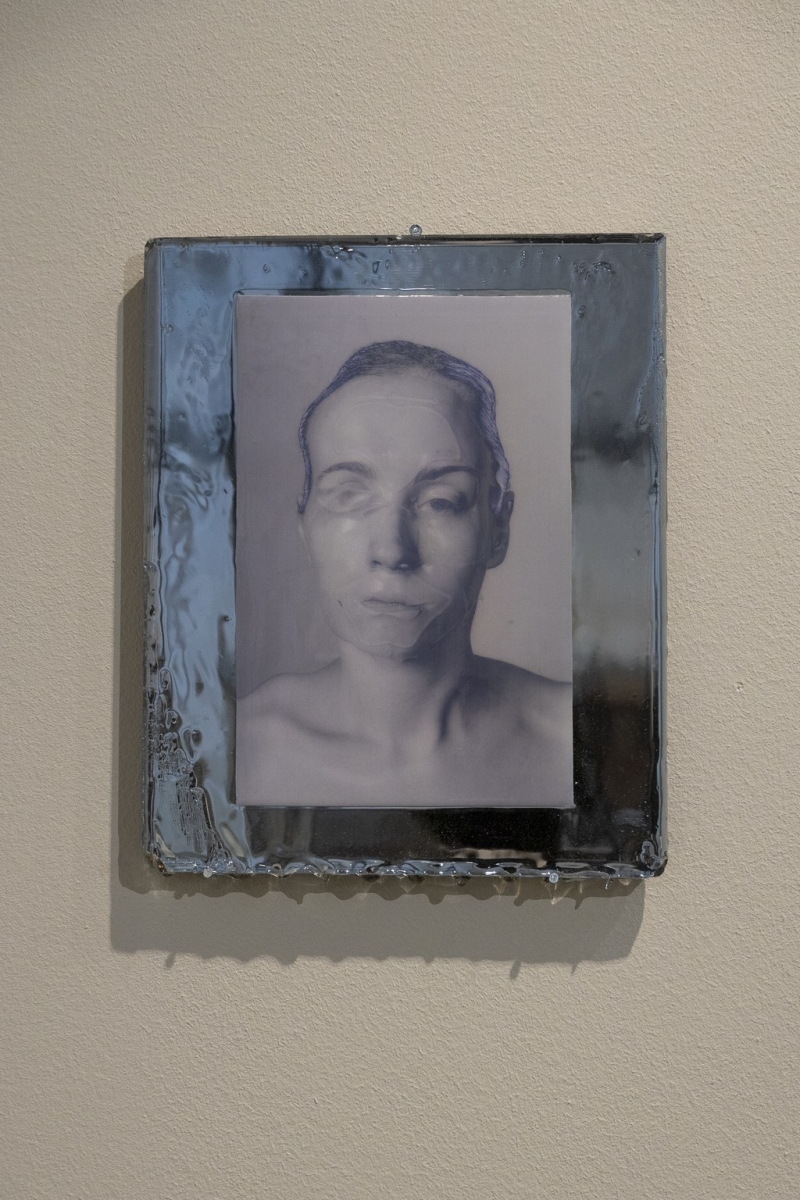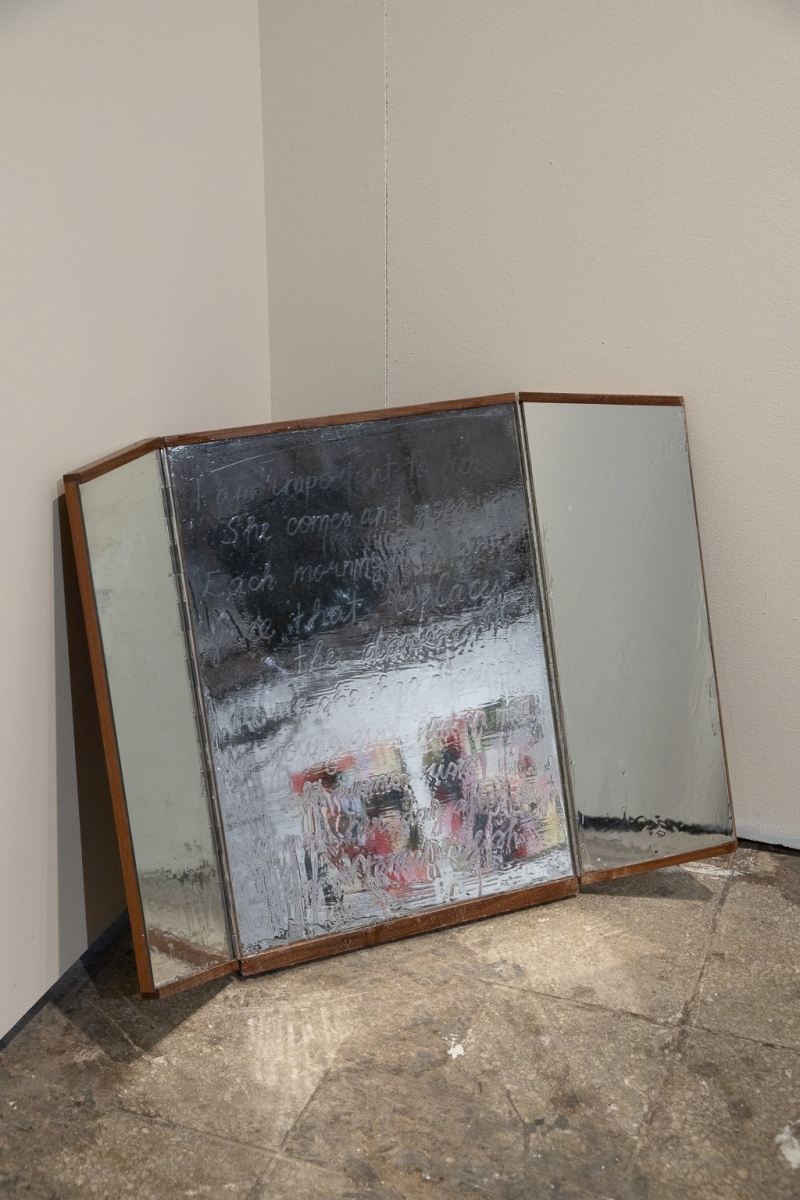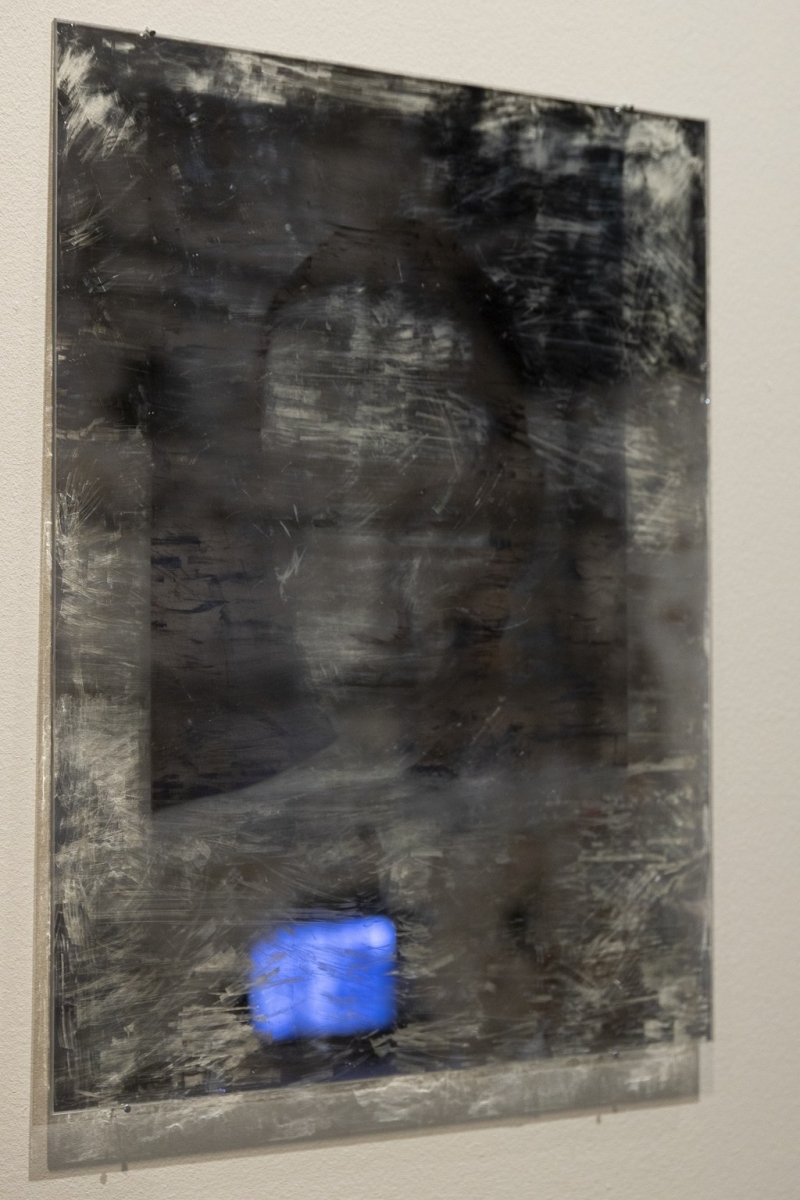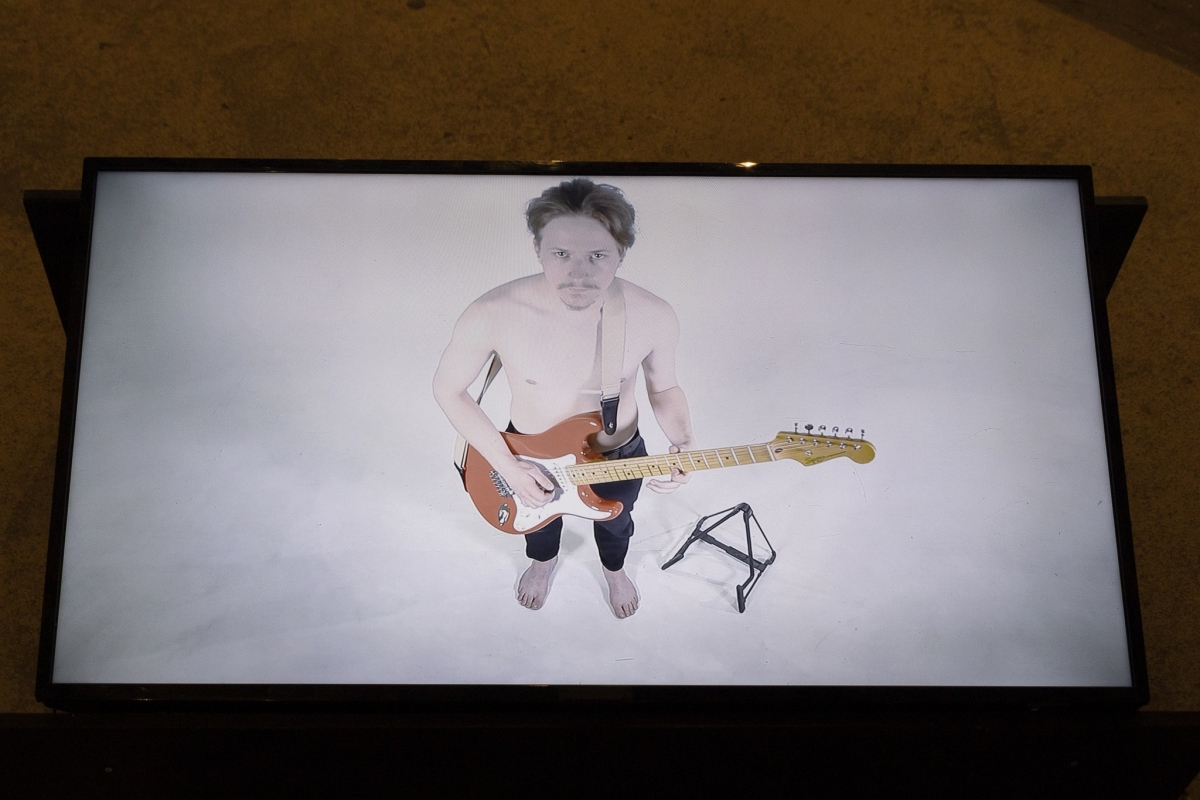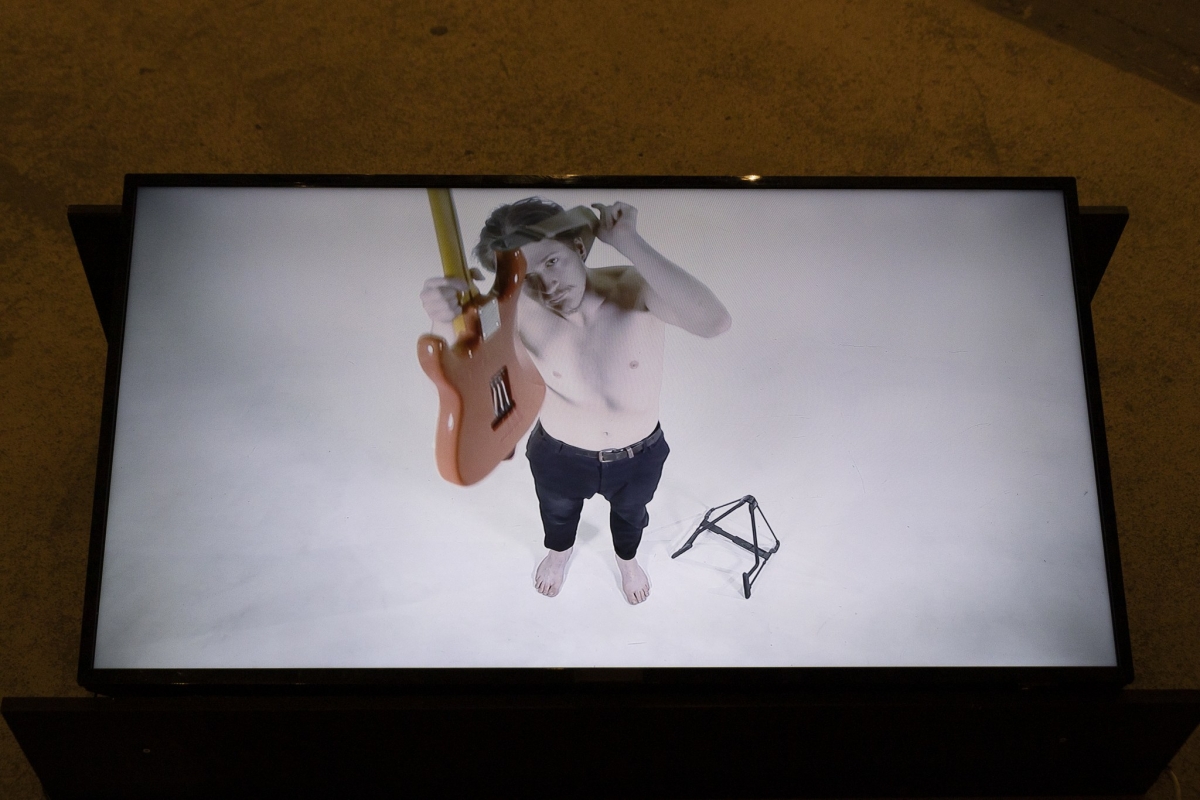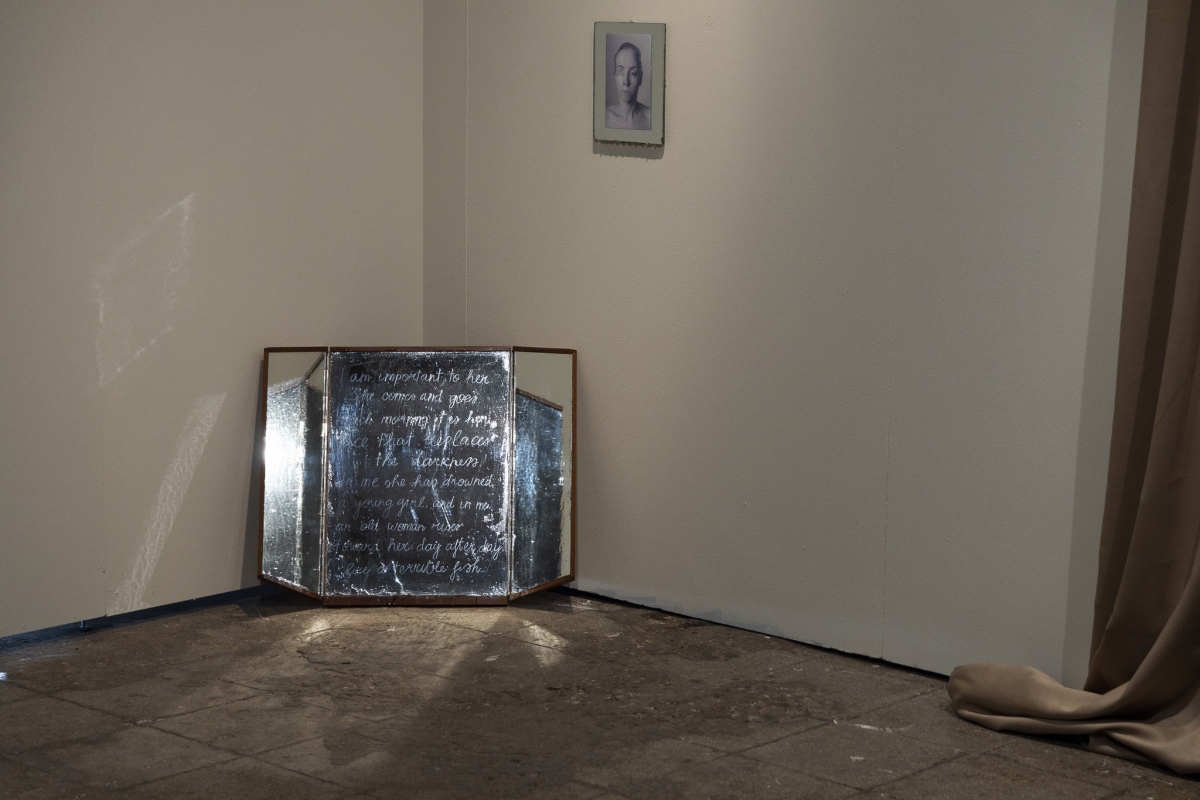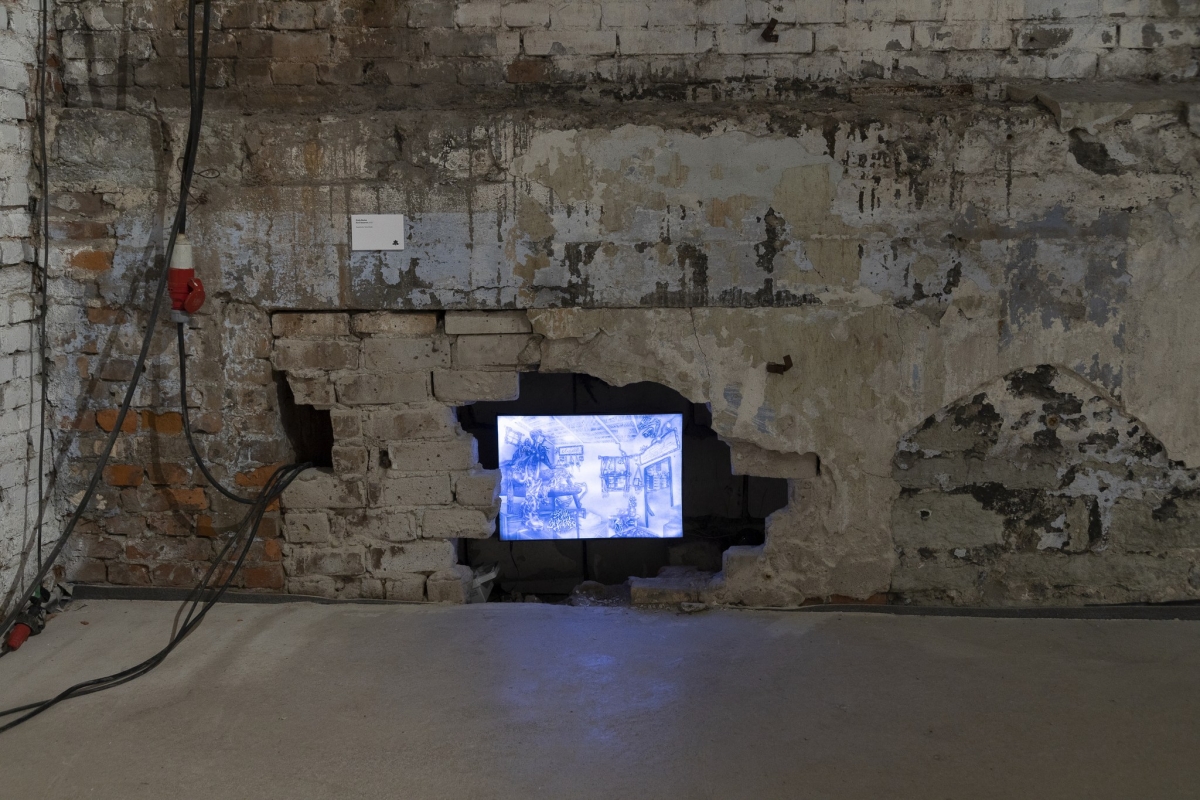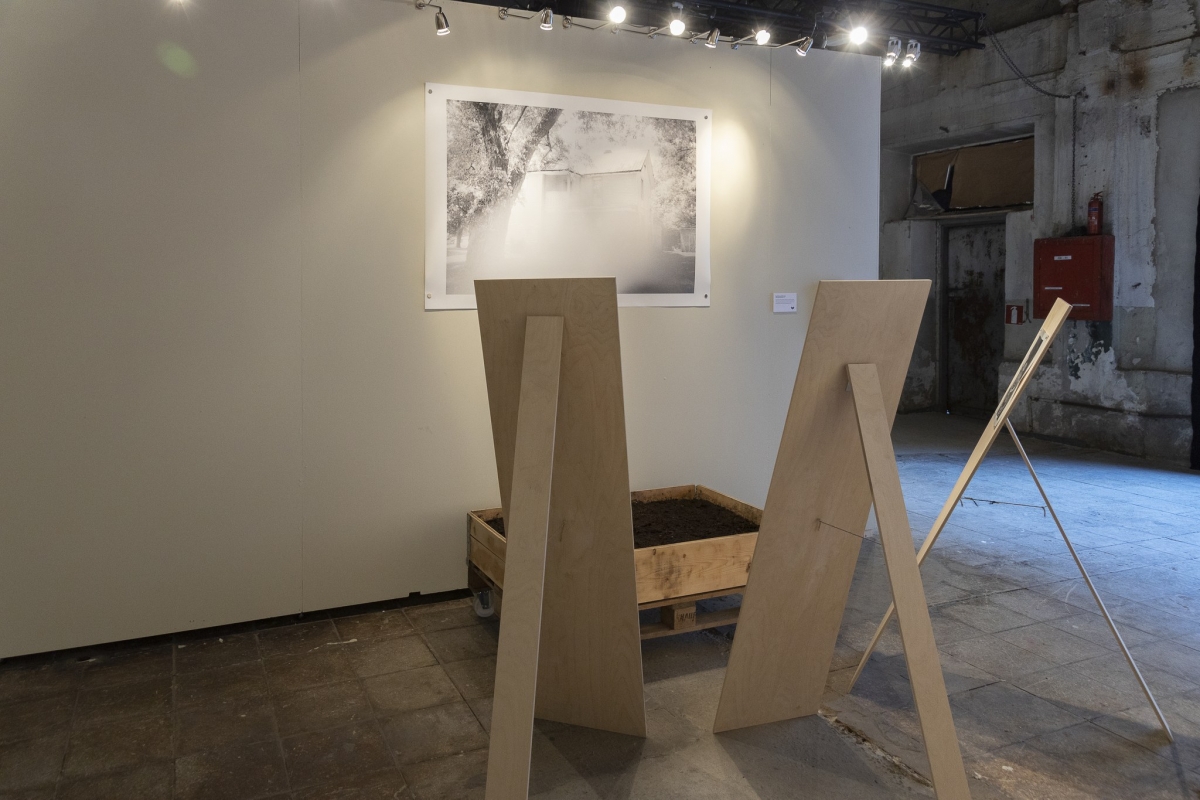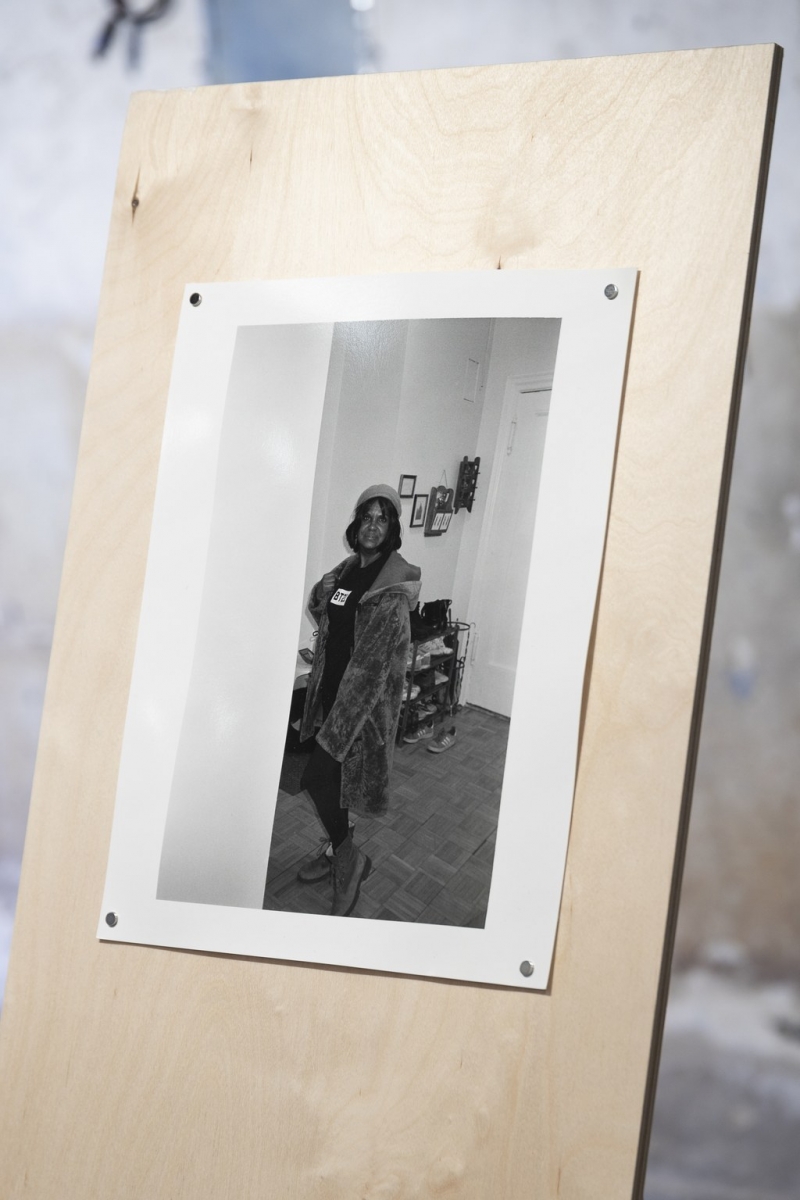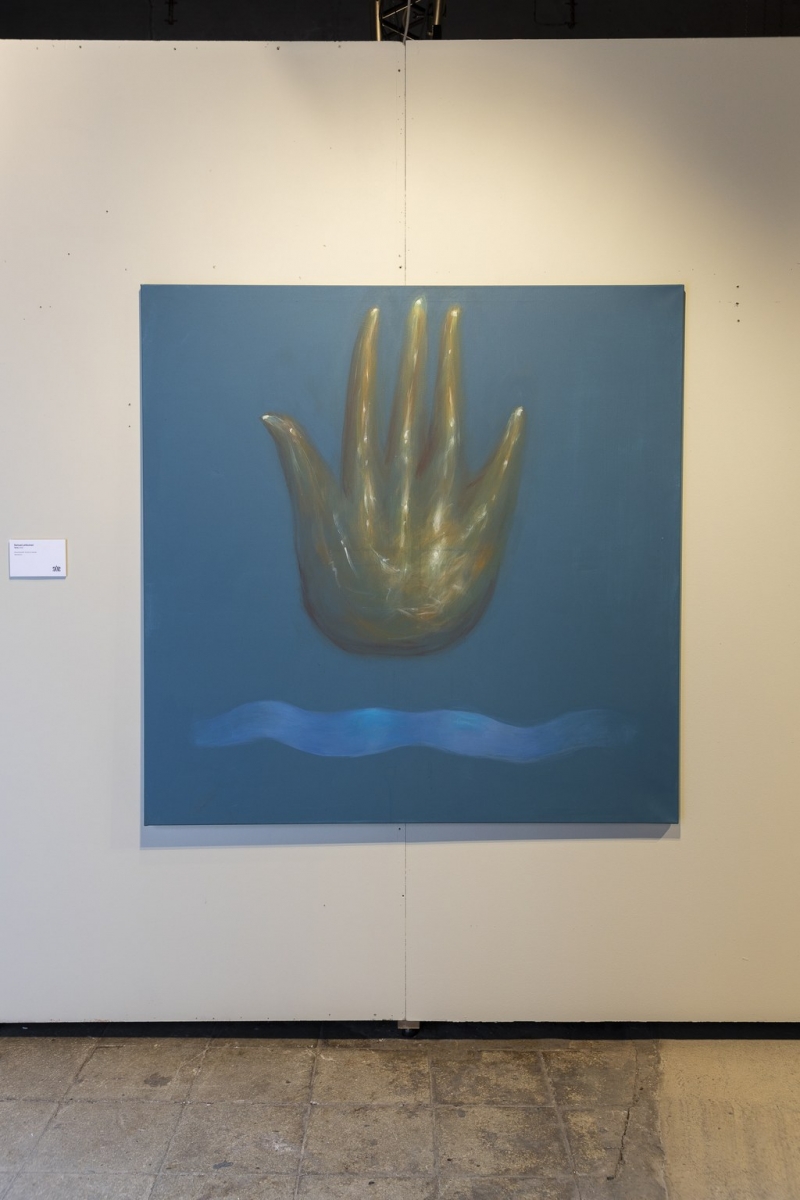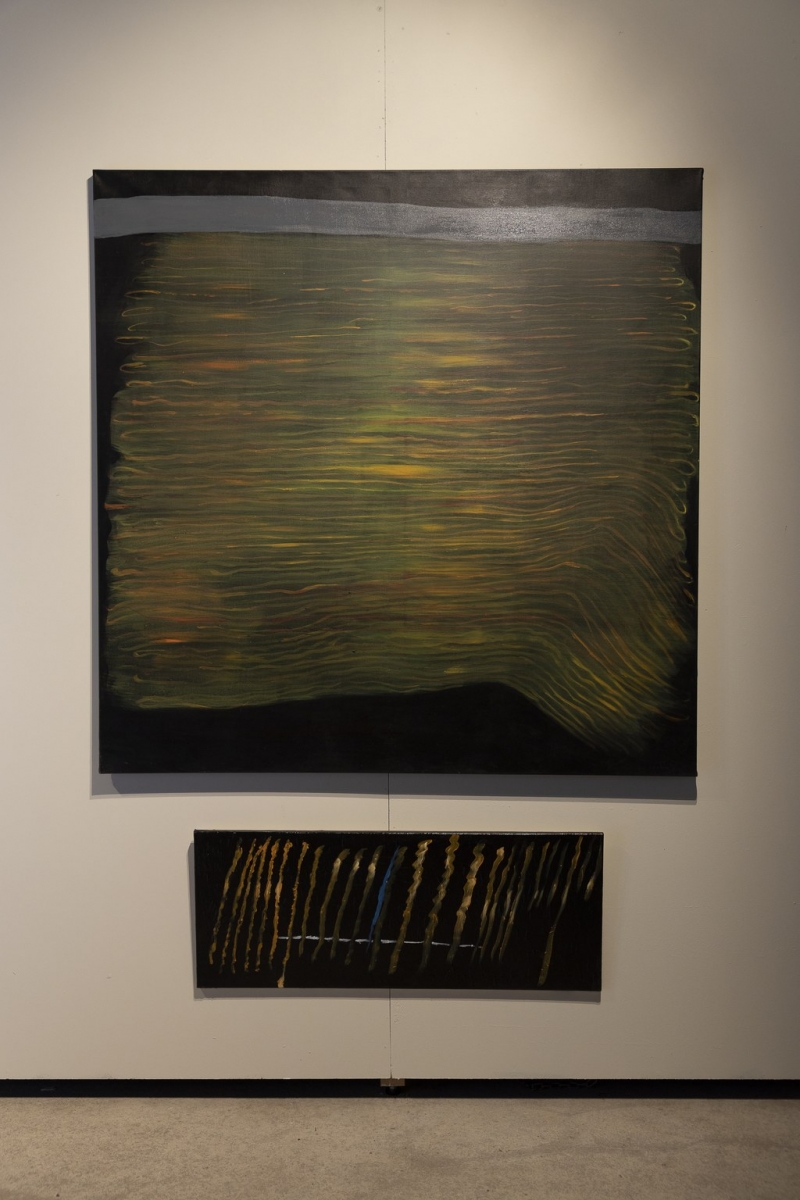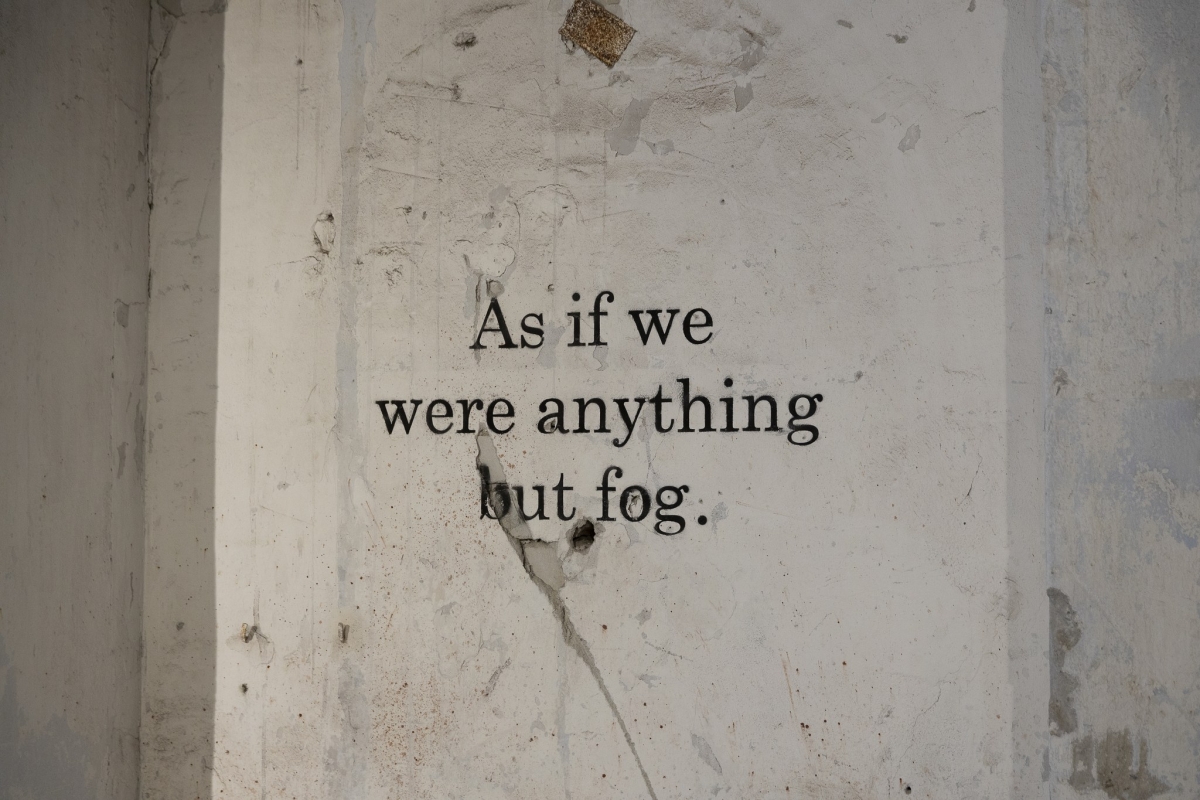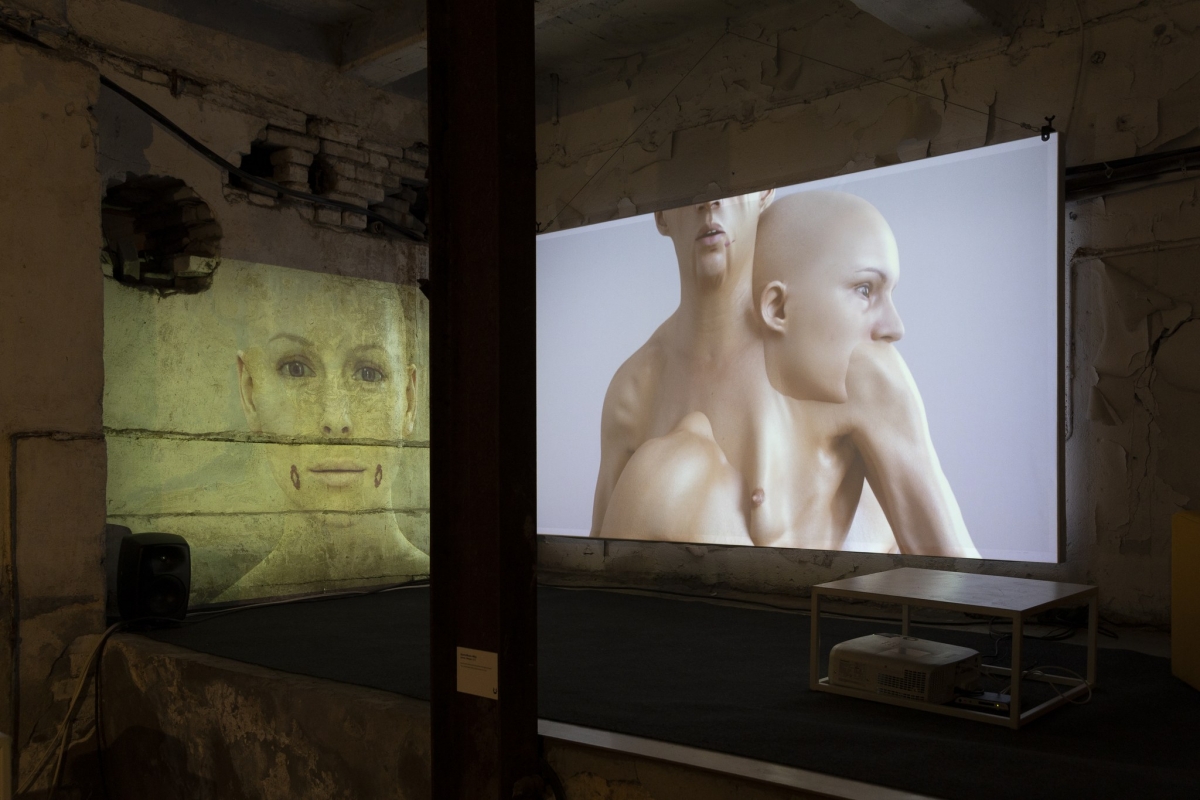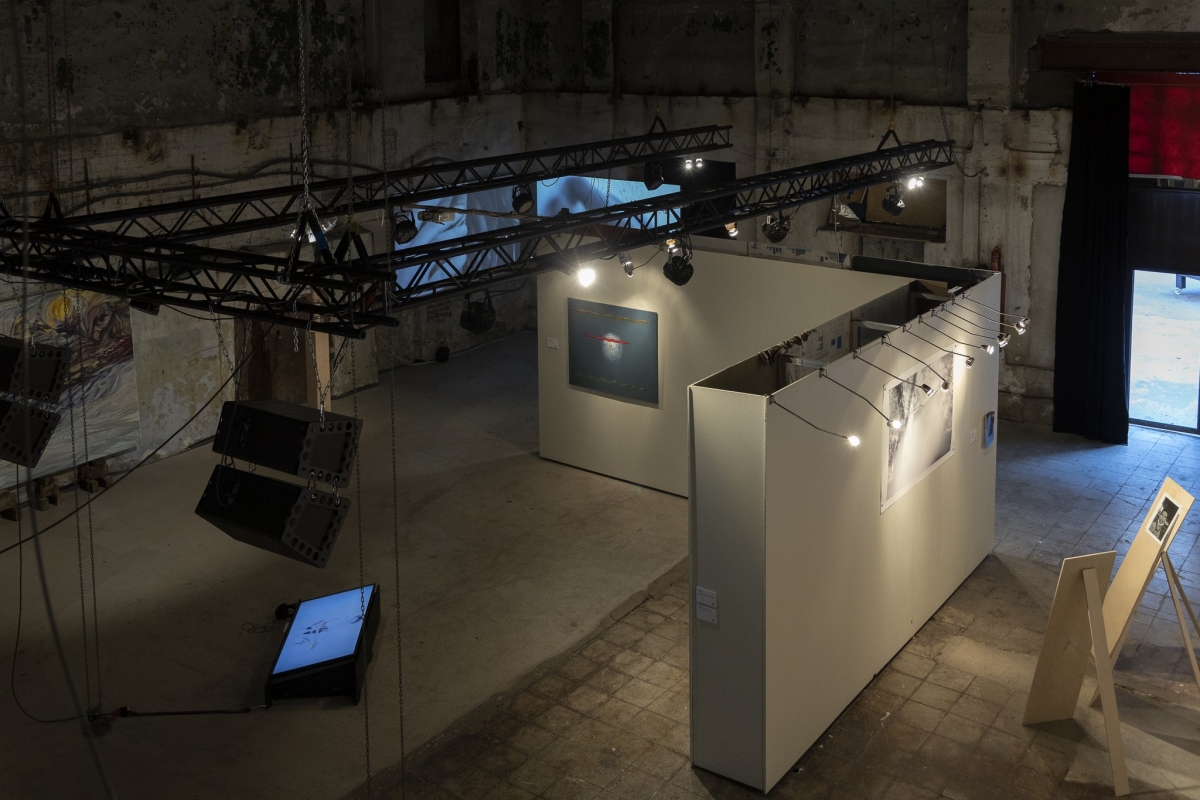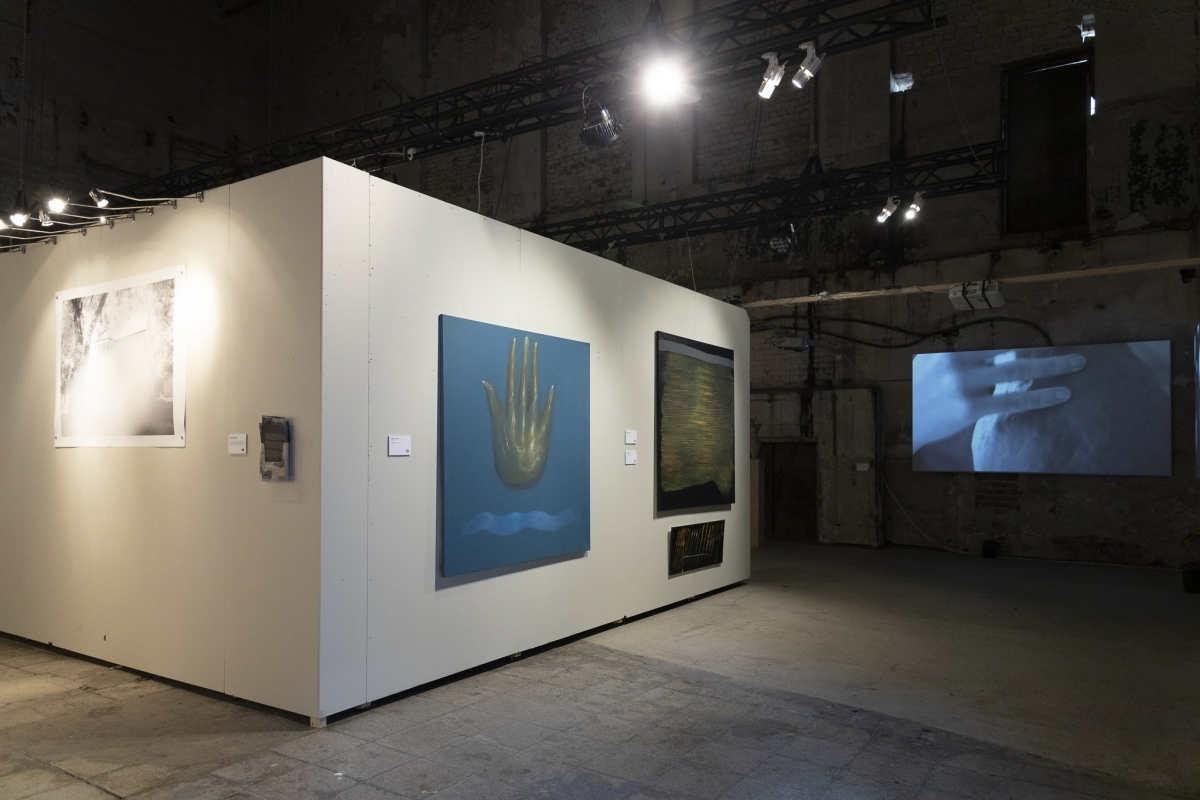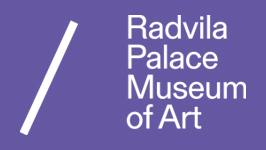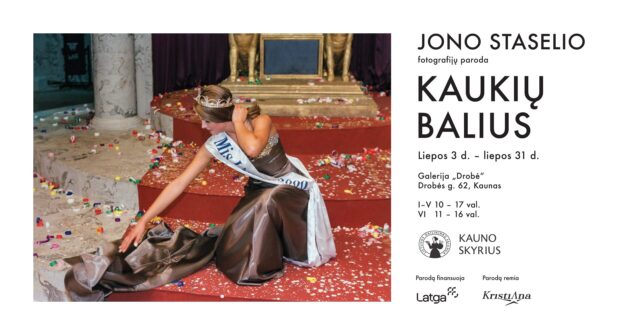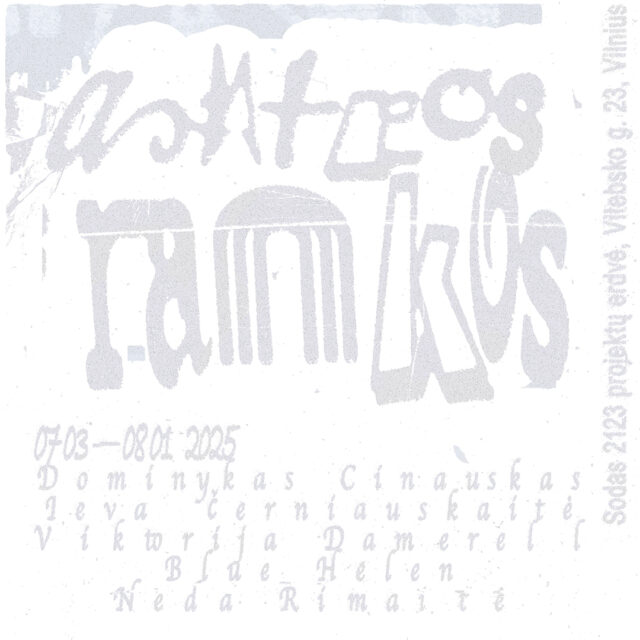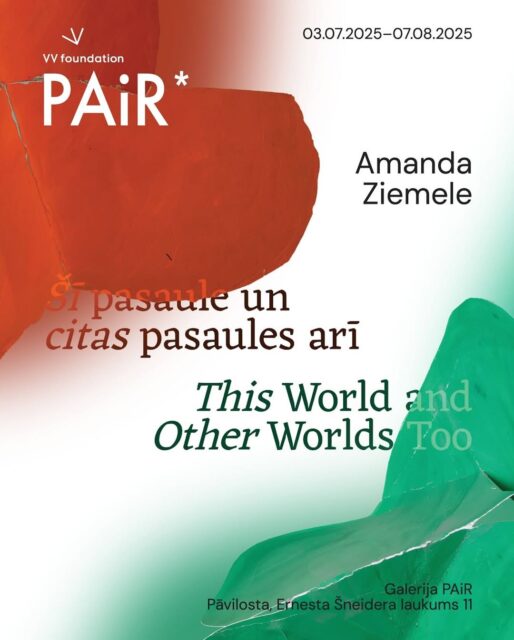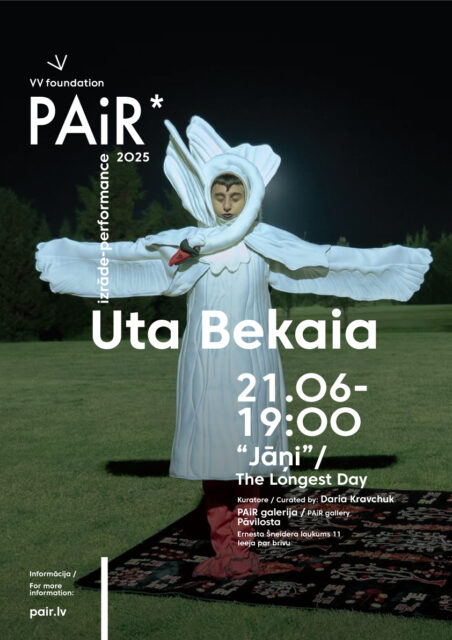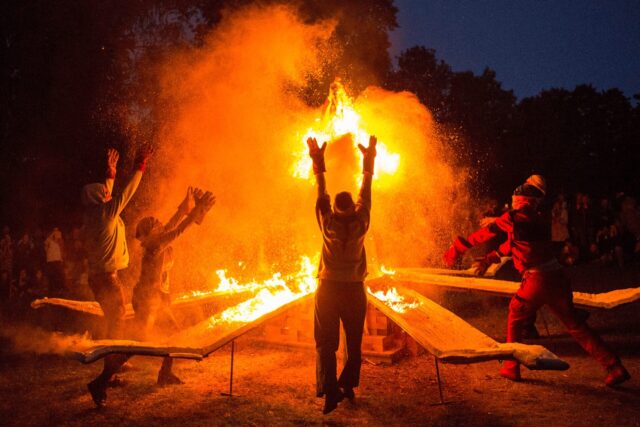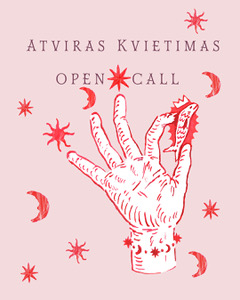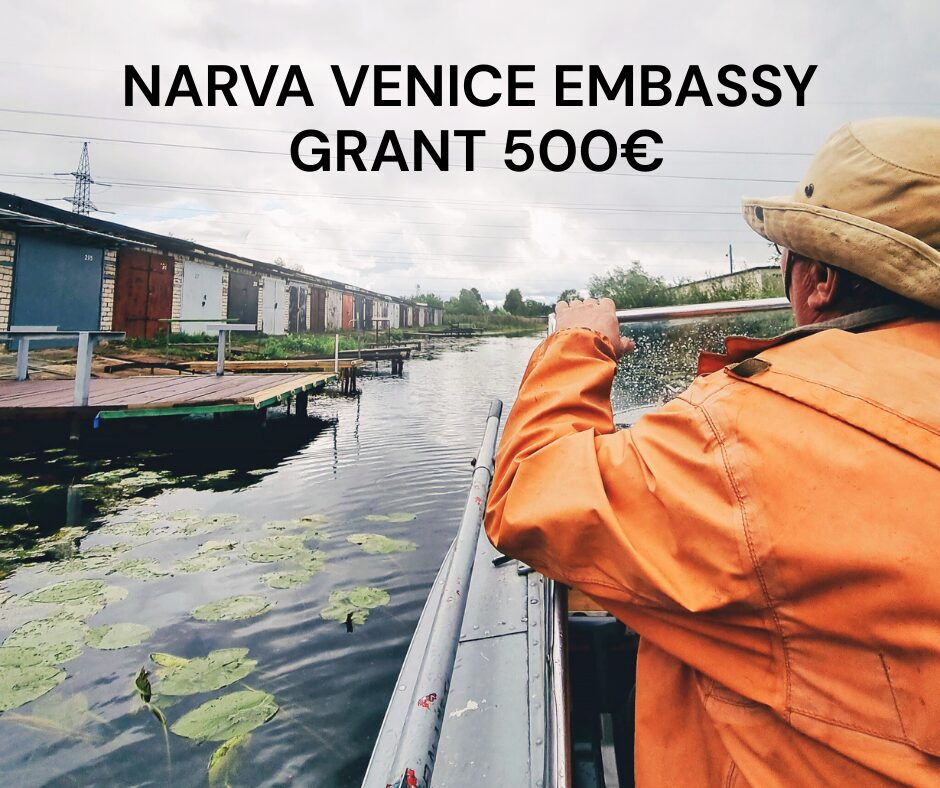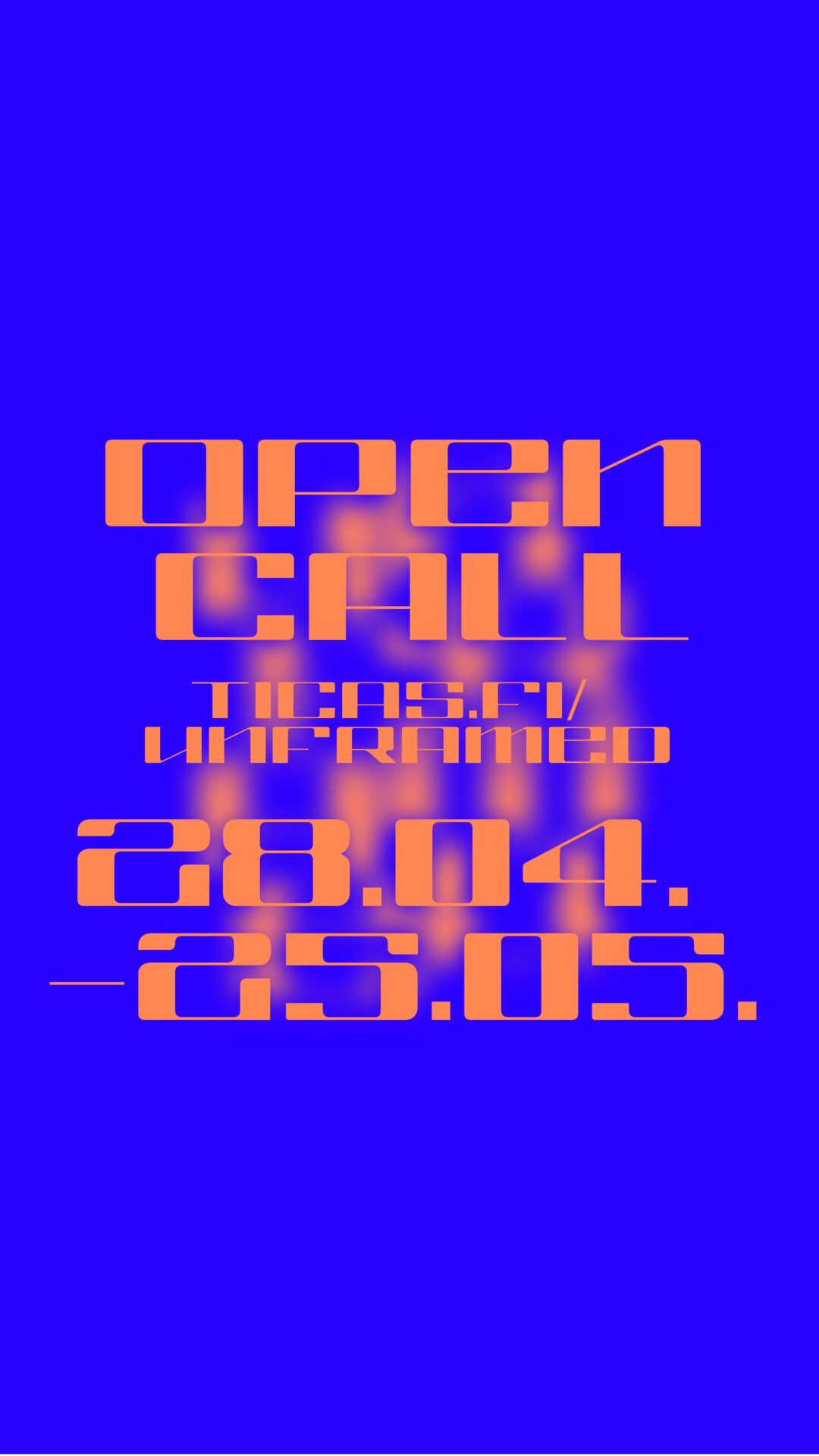Sketching through the (w)hole
It is a sunny day, but there is a hole in the wall. It is located at the opposite side to the entrance of ULM, an underground party- and exhibition venue that is part of an old industrial complex in Tallinn’s Kopli area. No one can tell me the reason for the serious amount of missing bricks. Yet something must have happened! Was an object catapulted through? It takes the shape of a cannon ball. In that case, it must have been light enough to reach the second floor, yet weighty enough to have such an impact on a firm, strong building. Maybe it was the opposite direction: something got pushed out, thrown down? Could be immaterial, triggered, such as a gas explosion. But how would that generate such a graceful round shape? I wonder whether it was aimed at someone who was present, as it takes out half of the window. Was a figure passing by?
This train of thought while entering the industrial scenery follows the writings of Estonian-American professor of developmental and cultural psychology Jaan Valsiner about generating meaning. When something occurs, animals tend to simply continue every day’s pace. What happens, happens, and we continue, because this is what we do. A human mind on the other hand tries to place it: why did it happen, how could it happen? And most important, how can we continue and move on from it?
The collaborative exhibition project Ideations of the World at ULM started from a series of interviews. An investigative research method really, one which could be employed to answer my questions about the hole in the wall. Yet in this scenario, something is different: there is no objective truth to be discovered in any artist interview. No resolved clearness or clean, closed off finish line. One could even say these interviews open up more questions. Here, you find no closing arguments. That doesn’t mean a work is not ready or worked through. On the contrary, every artist of the exhibition is guilty of an intense practice of meaning-shaping! They dance along the borders of reality and confront, poke, and challenge it. Here lies the strength of the exhibition: to me, a successful artist starts from an honest question, remark, and doubt, and unfolds it materially and visually.
A motif throughout these practices presented appears to be the body. Our limbs, eyes, ears, they are the first to encounter what is outside and they bring it in. It is intriguing for me to discover with what flexibilities, doubt, and engagement the artists approach this common material. From the impact on one body, when another relies on it, the origin and its new roots, the body in its shell or egg, the after-body, up to provoking the body of a visitor through the gaze of the artist.
We are all pulsing, acting and reacting, and it is the body through which we receive stimulus and generate meaning. Other artists in the exhibition engage in the practice of abstraction: they use it not to subtract layers of symbolism or associations, but rather to open up the various angles one can enter the work. Some even aspire to, one day, challenge the notion of meaning by deriving a work of art from all its suggestive layers, in order to let the material speak for itself.
Not to forget the most commonly used, ancient signifier, language, which in this exhibition crawls into the walls of the space.
The real ‘on spot’ choice however is the title starting from the word ‘ideations’. As a non native English speaker, I immediately think about ideas, viewpoints of the world. Of course, all artists have a position, and thus ideas about the world they inhabit. Even so, a lot of them react directly and question those ideas through their creation. But ideation in itself is a process. It is a noun, but it refers to a verb.
An ideation is the process itself to generate ideas. Examples of those practices are brainstorming and sketching. Even a technique called ‘worst possible idea’ is added to the list. That is why the interviews opened up questions and were just the start of it. An artistic work is most of all a practice of reshaping and rethinking. One work leads to another. I guess that creates a body of work. It is highly productive, so I dare to say, to try out this ‘worst possible idea’ technique as an artist. Likewise, the notion of meaning could essentially be a verb. It continues and re-invents itself through every happening, every new hole in the wall. Both artists as curator in Ideations of the World engaged in this practice vividly.
Laura De Jaeger
The artists: Alyona Movko-Mägi | Ats Kruusing | Cloe Jancis | Kati Müüripeal | Lara Brener | Laura Liventaal | Maris Paal | Noah Emanuel Morrison | Samuel Lehikoinen | Zody Burke
Curator | Liisi Kõuhkna
Graphic design | Taylor “Tex” Tehan
Installation and technical support | Estonian Fairs Centre, Valge Kuup Studio, Tallinna Art Hall
Location: North Tallinn, Manufaktuuri 5, ULM
Opening: 21.05.2022 19:00
The exhibition is open for visits L-N 21.05-26.05, 12:00-18:00
Supported by: Estonian Academy of Arts
Photography: Noora Lehtovuori
